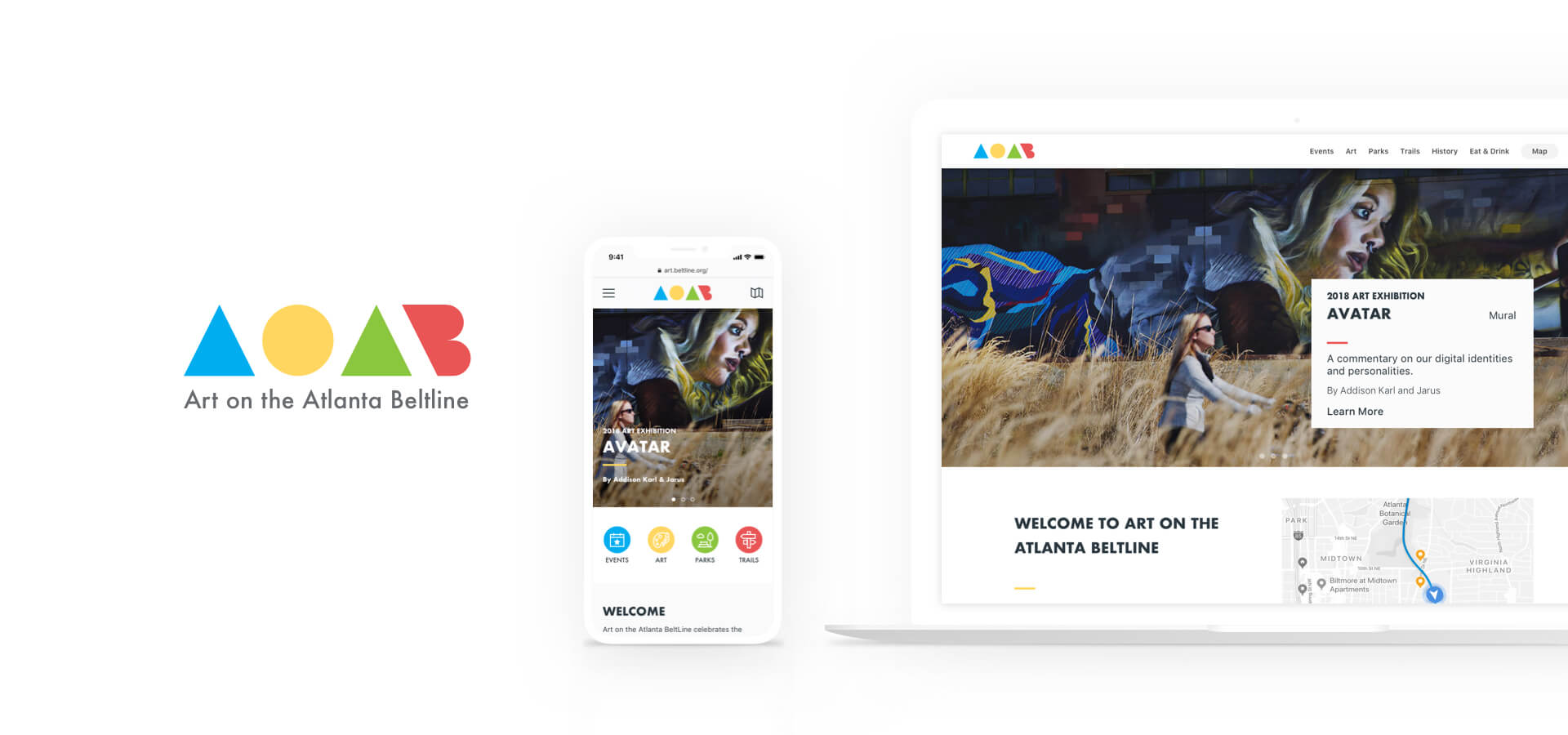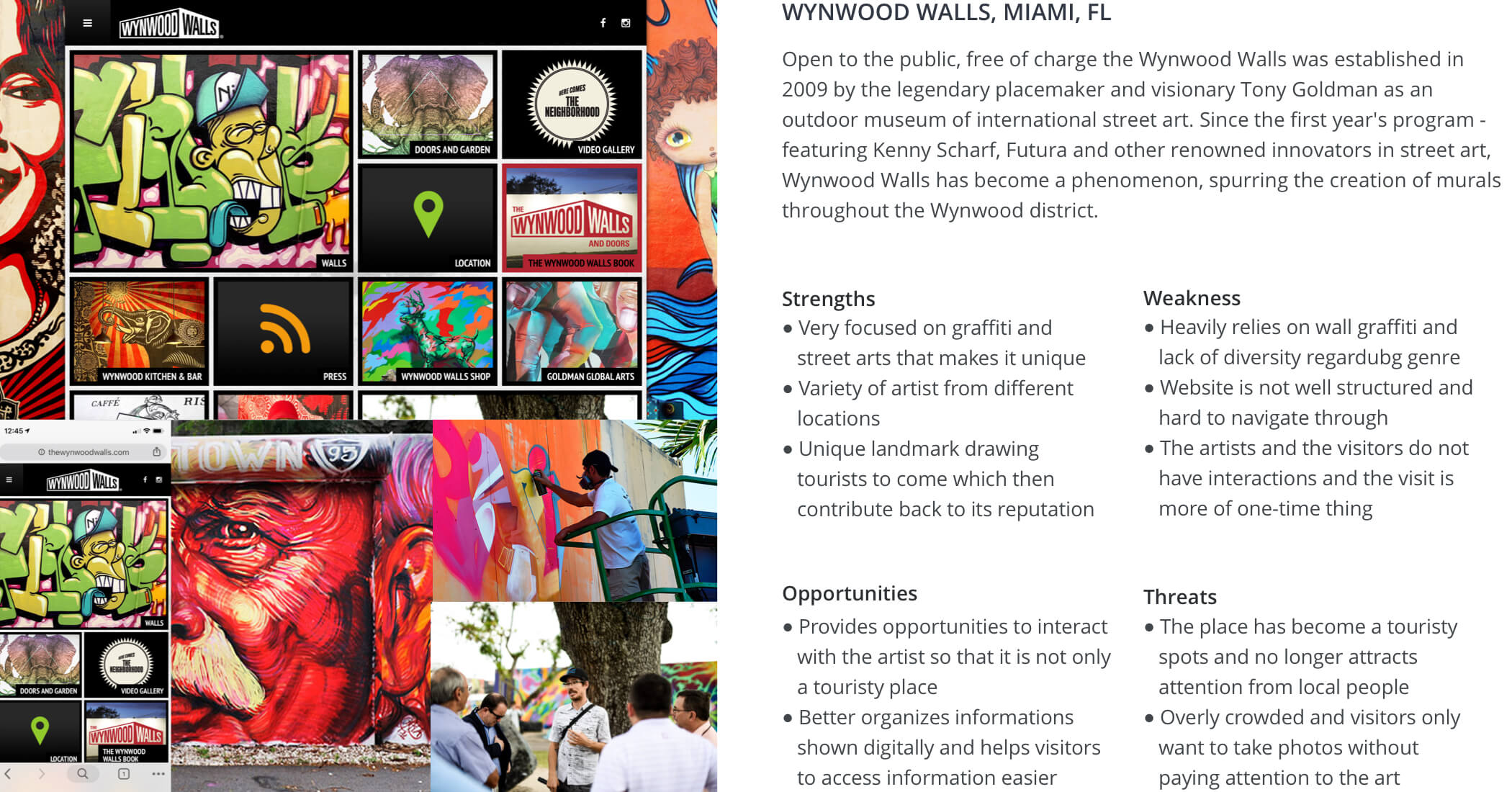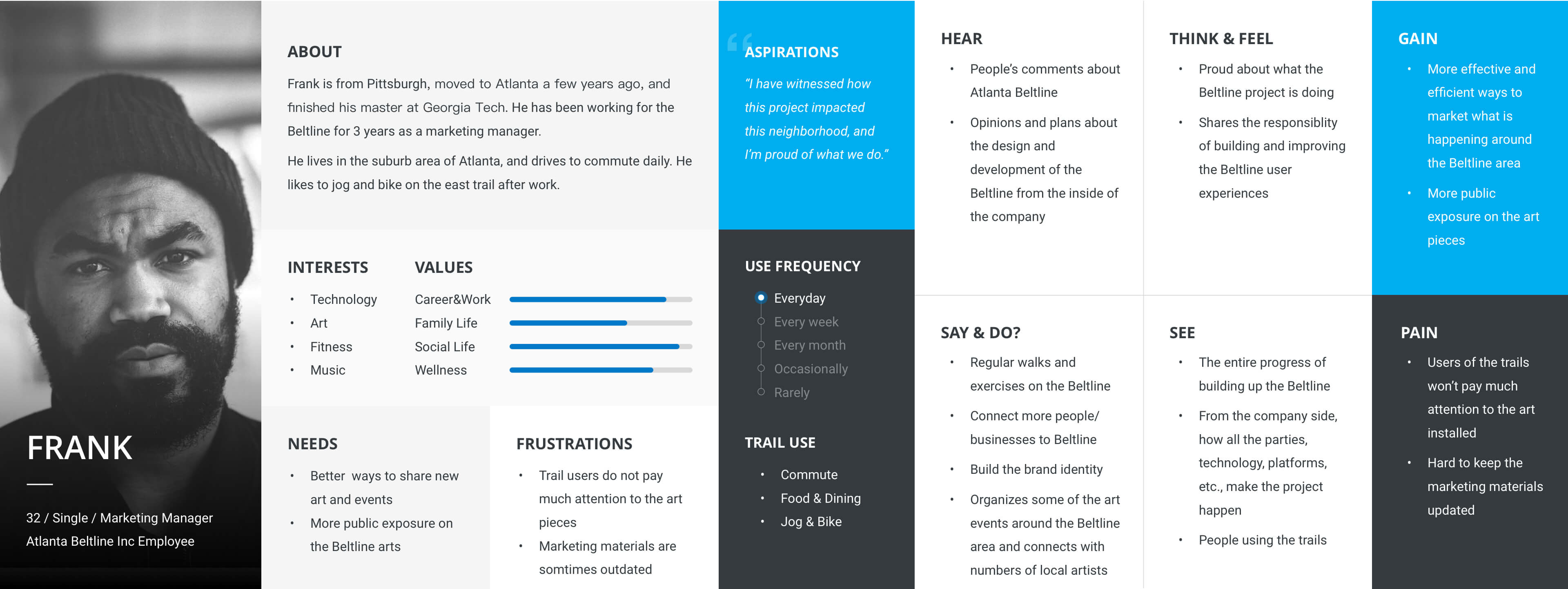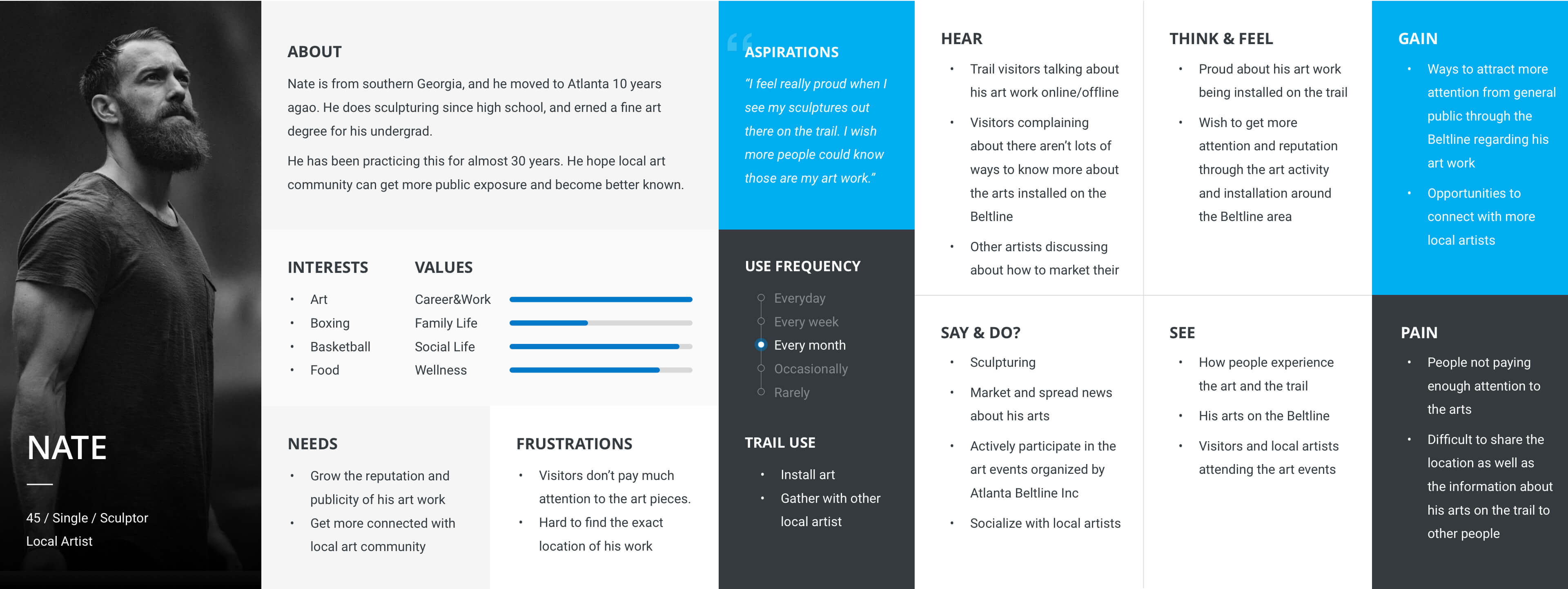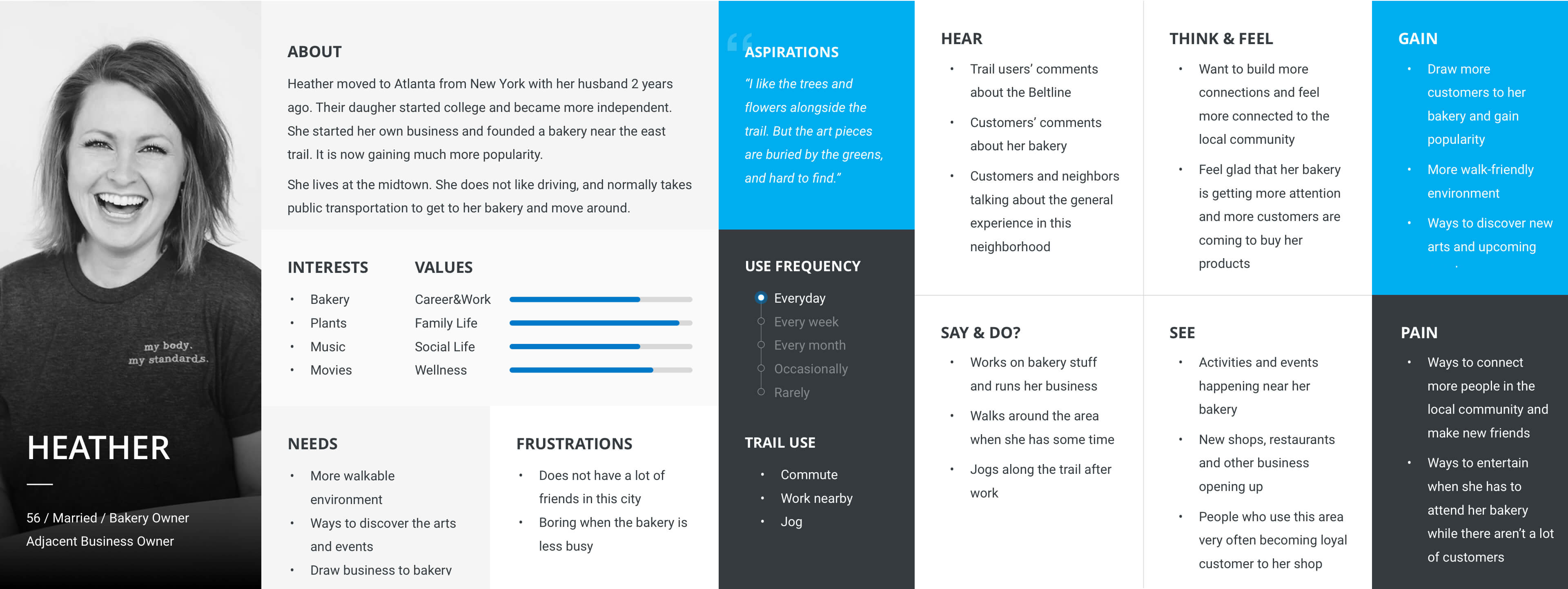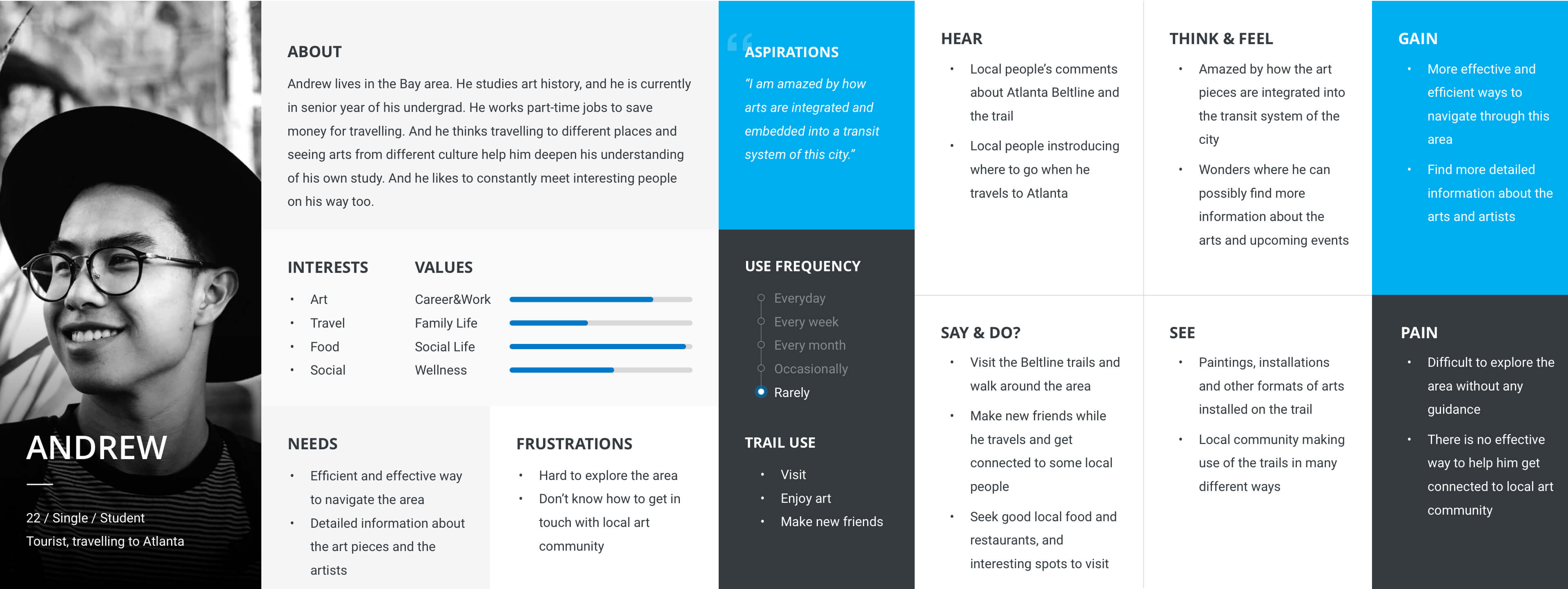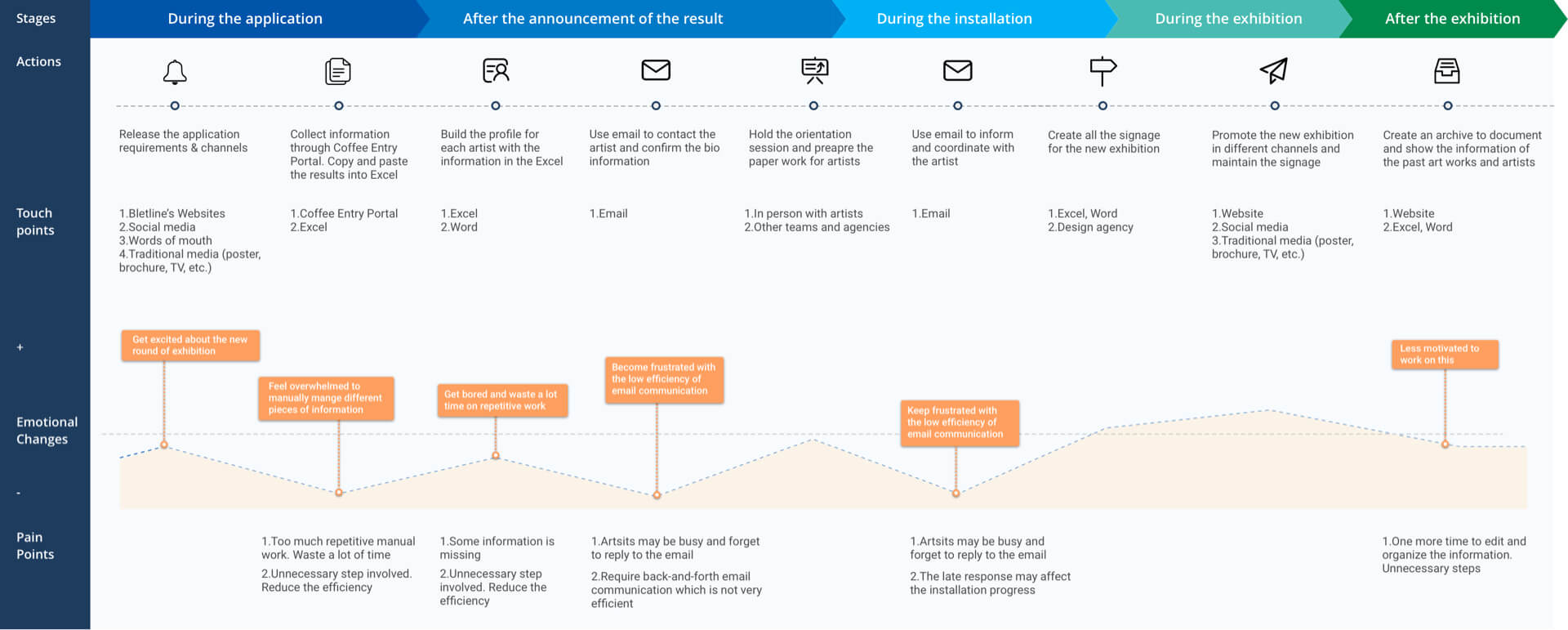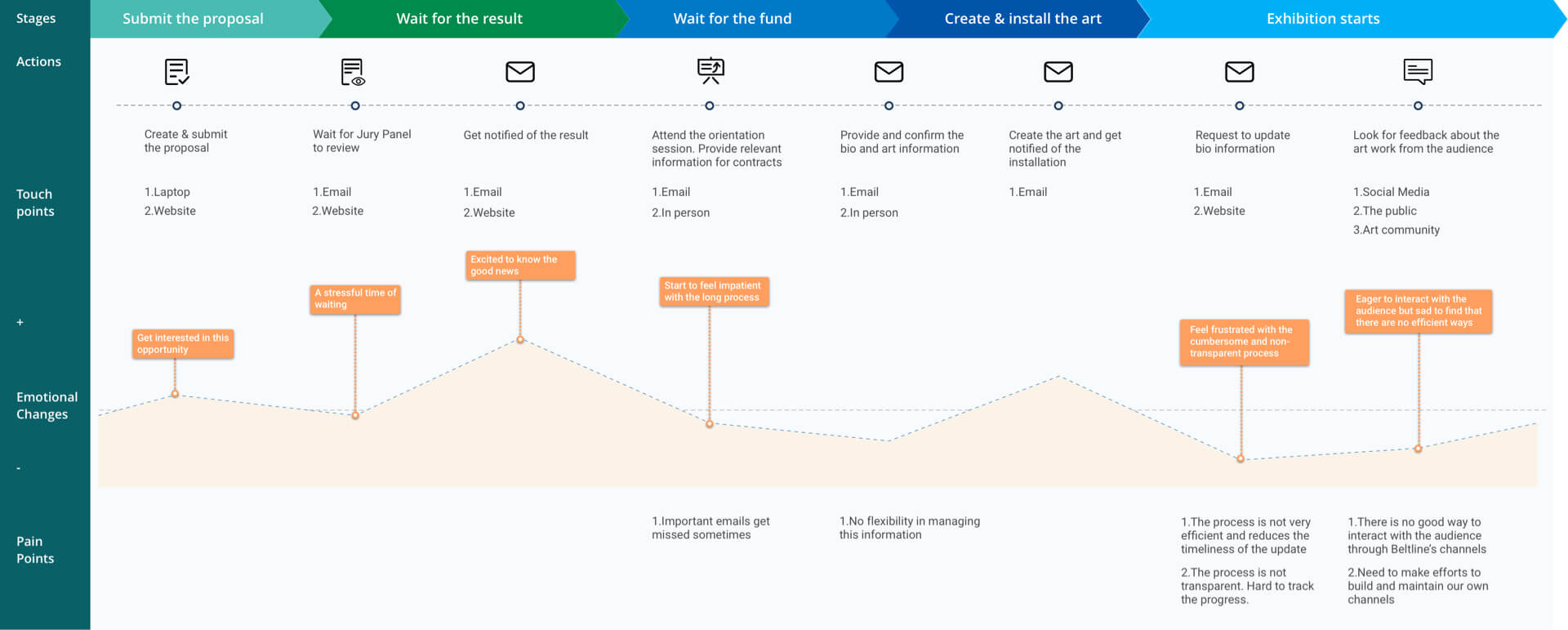How might we improve
the experience related to art on
the Atlanta Beltline
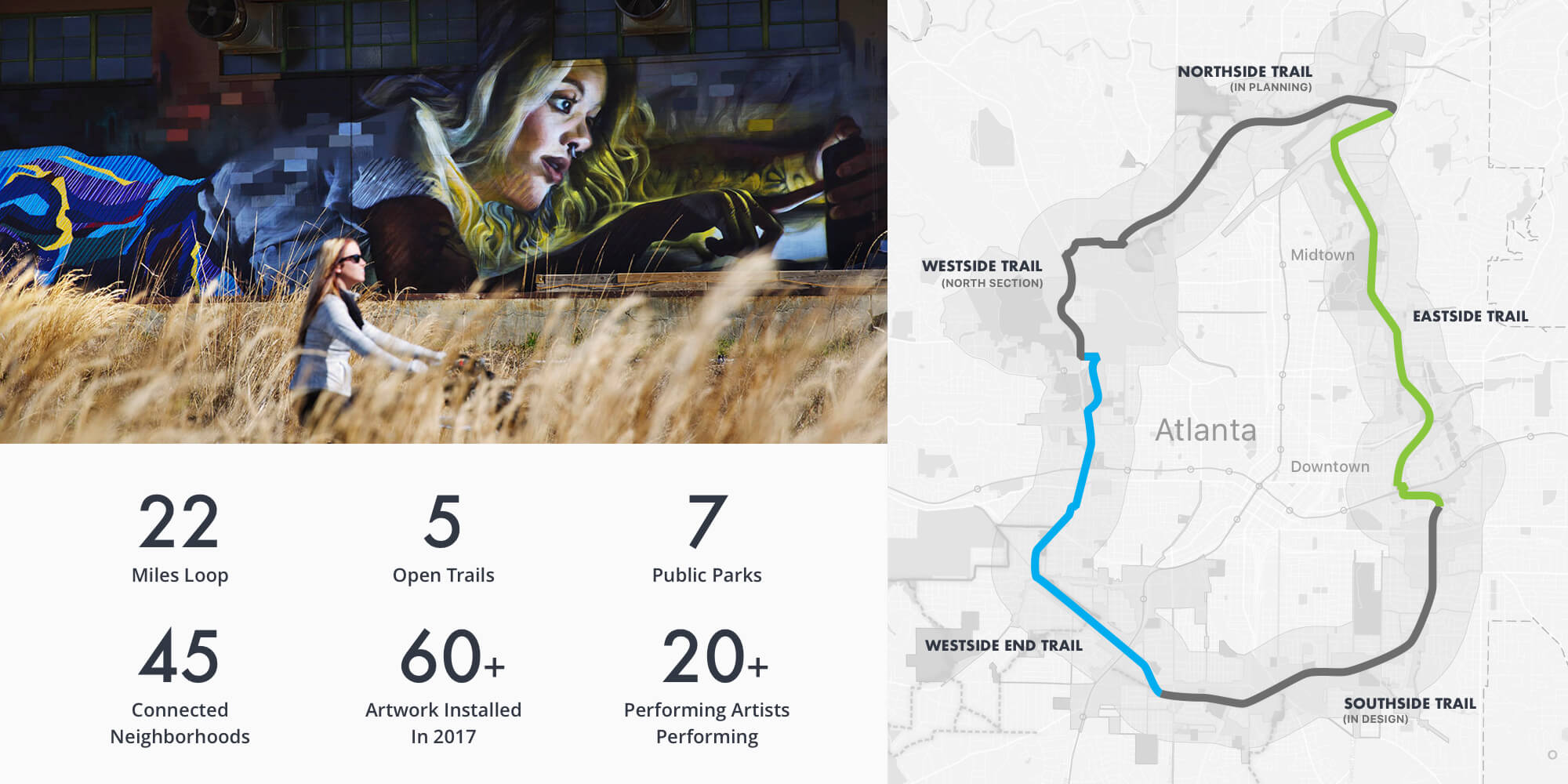
Preliminary Research
To better delineate our problem space, uncover user needs and discover current pain points, we carried out a series of research including field observation, online research, interviews, stakeholder mapping, and competitive analysis. We analyzed Atlanta Beltline's existing digital touchpoints to understand current user experience challenges.
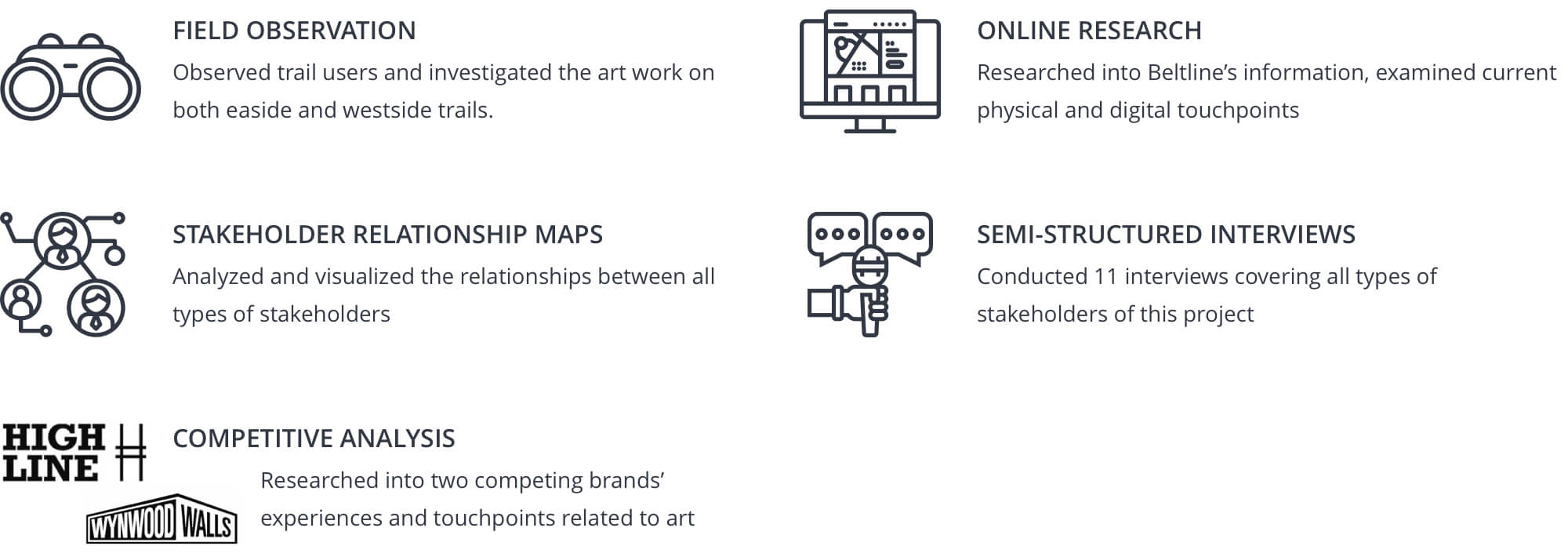
Field Observation
Through the field observationg of two main trails of Atlanta Beltline, we found following
issues:
It is hard to aquire art information on the trail. Signage is either missing or in a
bad maintenance condition.
Printed materials including maps, flyers, brochures are only provided at a few
locations on the trails.
Visitors cannot obtain art information based on the location, preference and need.

2017 Exhibition Key Facts
There were 11 murals, 55 sculptures/installations/pavilions installed on the Beltline. And there were 26 performances actively being performed. However, there are only 2 administrators who currently manage the program, communicate with the artists, operate and maintain the channels that touch the visitors and general public.

Current Websites
Atlanta Beltline currently maintains two websites - one for Atlanta Beltline Inc. and another for Art on the Atlanta Beltline. Key issues include overlapping content, inconvenient information search experience, and inconsistency between main brand and sub-brand visual systems.
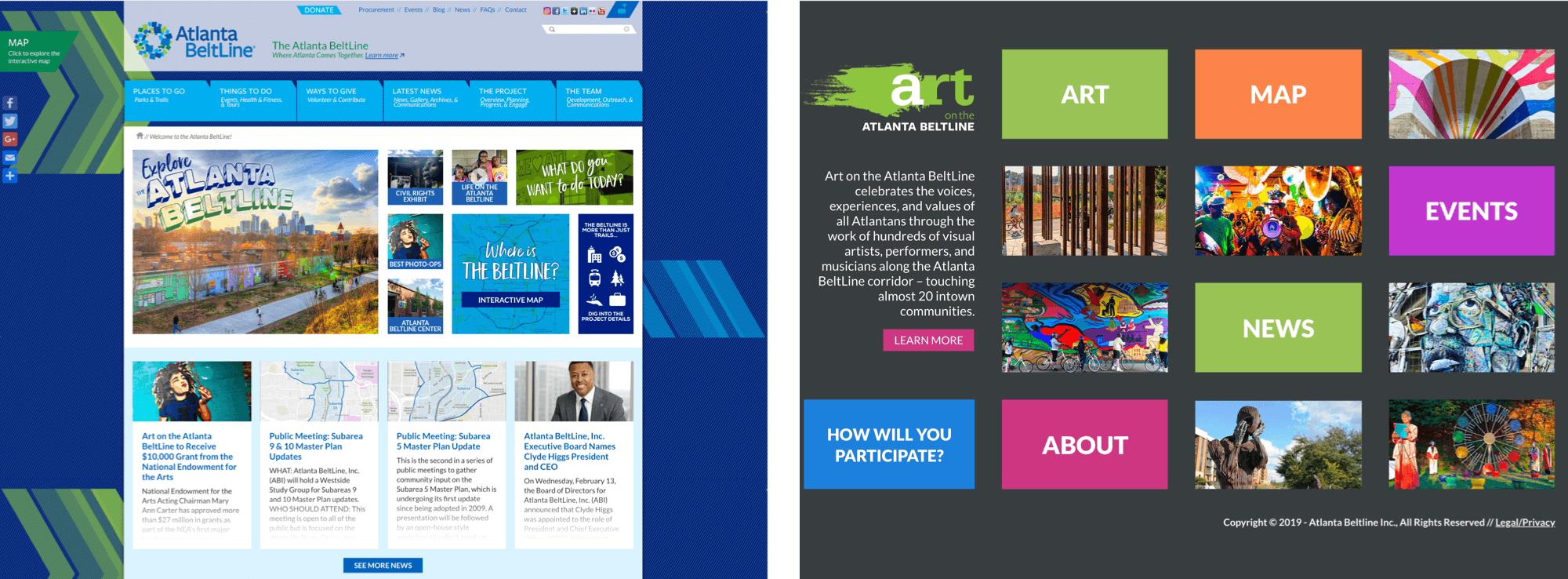
Existing Interactive Map
The existing interactive map is built on Google Maps customization but has integration issues. The interaction differs from standard Google Maps usage, lacks geo-location customization, has overlapping labels, and provides limited useful information for each entry.
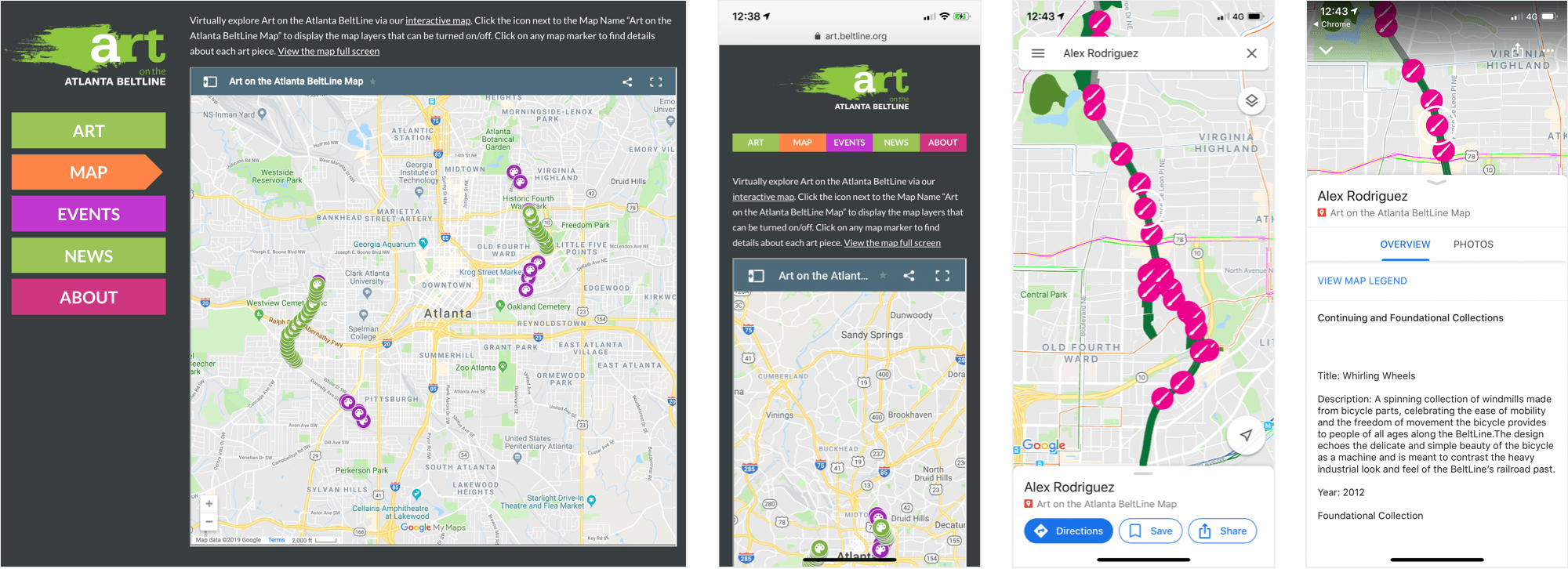
Semi-structured Interview
We conducted semi-structured interviews with various stakeholders including visitors, artists, and Atlanta Beltline staff to understand different perspectives on the current art experience and identify opportunities for improvement.
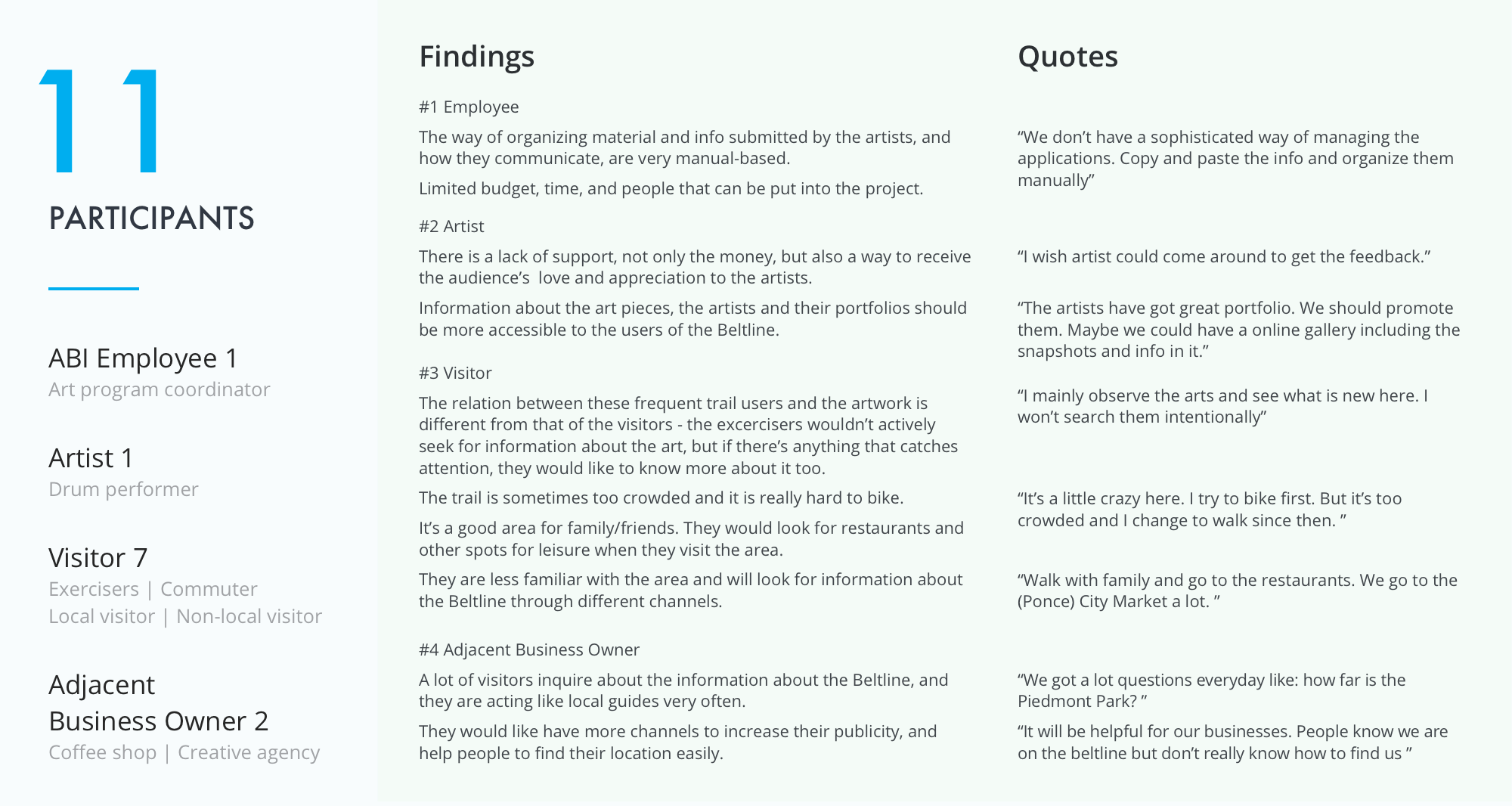
Stakeholder Relationship Map
To better understand the ecosystem, we mapped key stakeholders and their relationships. This analysis helped us identify opportunities for improving communication and collaboration between different user groups in the Atlanta Beltline art program.

Competitive Analysis
We analyzed similar art and cultural programs to understand best practices and identify opportunities for differentiation. This research informed our approach to creating a unique and effective solution for the Atlanta Beltline context.
The Highline, New York, NY
Wynwood Walls, Miami, FL
Target Audience & Problem Space
Based on our research findings, we synthesized insights from all stakeholder groups to define clear problem statements and develop comprehensive user understanding through personas and journey mapping.
Synthesized Insights
Based on the research findings, we synthesized pain and gain points of 4 main target user groups and further defined the problems we would like to address through our design.
Problem Statement
- How might we improve the efficiency and reduce the manual labor required for collecting and managing art information?
- How might we improve the accuracy and timeliness of information about Atlanta Beltline that is presented to the visitor?
- How might we make the art work's information and other useful information more accessible to visitor?

Personas & Empathy Maps
We developed detailed personas and empathy maps for our four main user groups to better understand their needs, motivations, and pain points throughout their interaction with the Atlanta Beltline art experience.
Current User Journey Maps
We mapped the current user journeys for each stakeholder group to identify pain points and opportunities for improvement in their interactions with the Atlanta Beltline art program.
ABI Employee
Artist
Visitor
Service Design Solution
Through systematic ideation and concept development, we created a comprehensive design solution that addresses the identified pain points and enhances the Atlanta Beltline art experience for all stakeholders.
Ideation
Through analyzing current interactions between the 4 stakeholder user groups, we defined 6 issues that we planned to address in our design. And we ideated the design features accordingly.
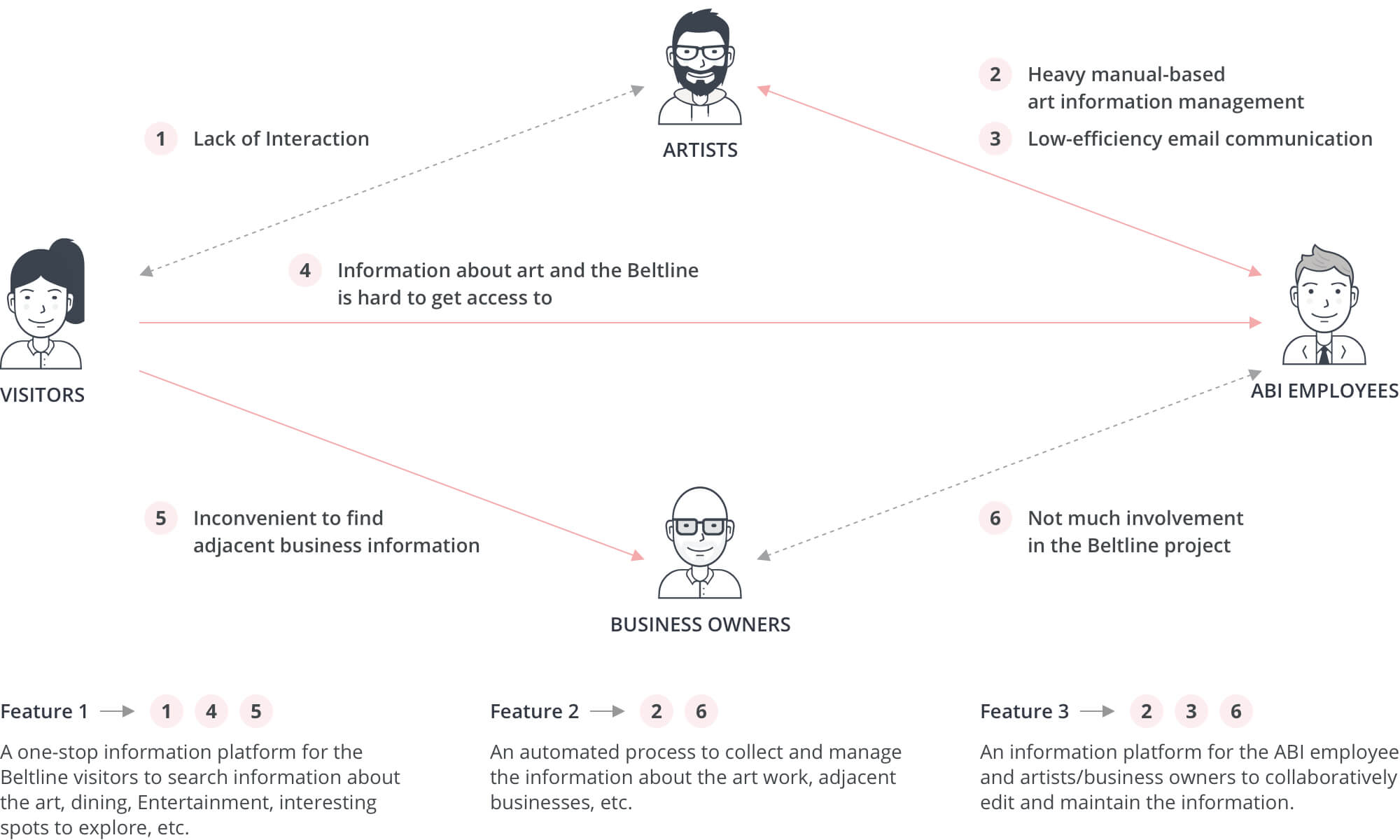
Concept
Our design concept integrates digital and physical touchpoints to create a seamless art discovery experience that serves the needs of visitors, artists, and Atlanta Beltline staff.
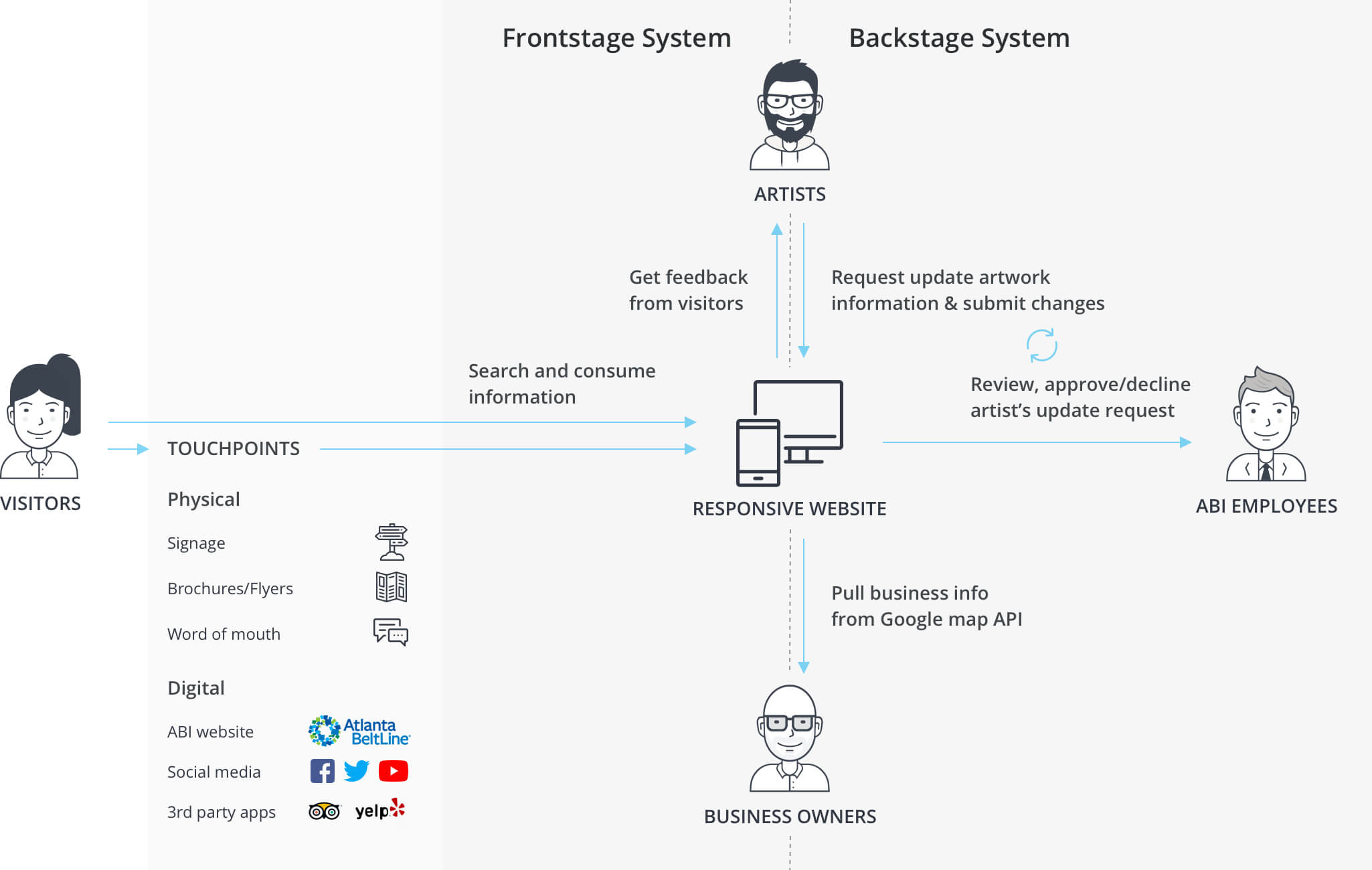
Service Blueprint
Based on the information architecture and the key user flows, we created the service blueprint which delineates how all types of stakeholders make use of and interact with the system.
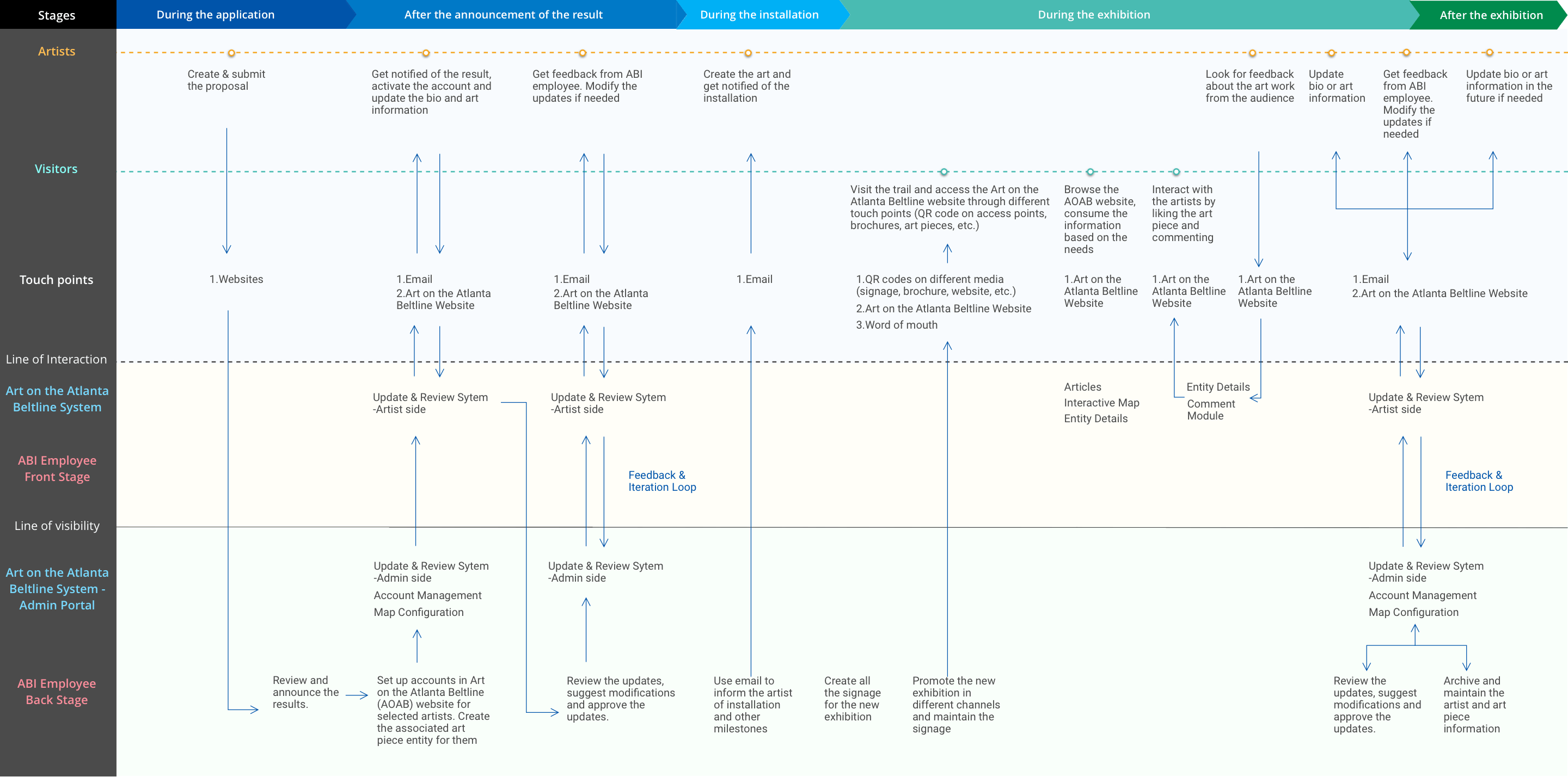
Design Solution
Frontstage System
The frontstage system focuses on the visitor-facing experience, providing intuitive ways to discover, learn about, and engage with art along the Atlanta Beltline.
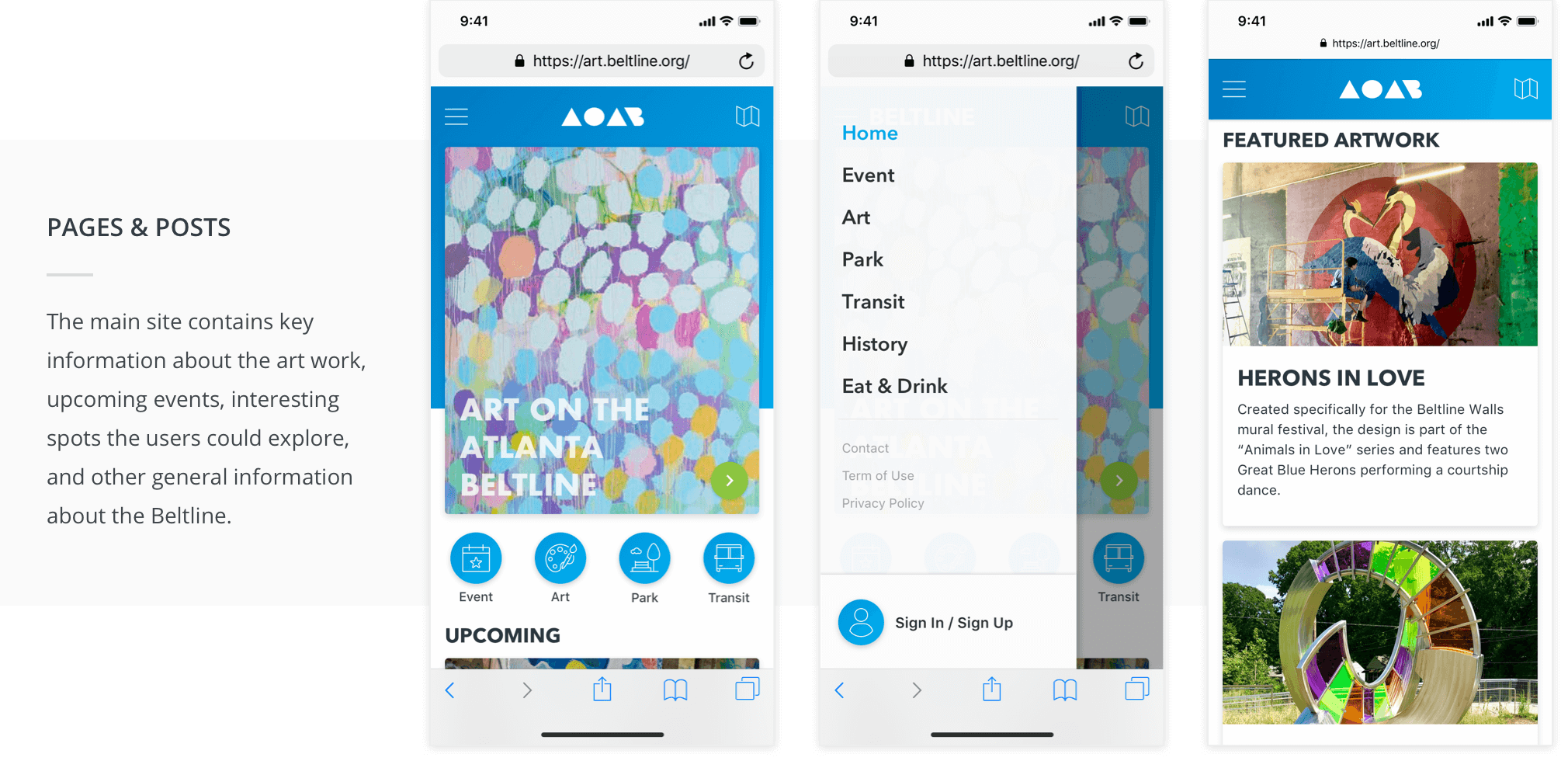
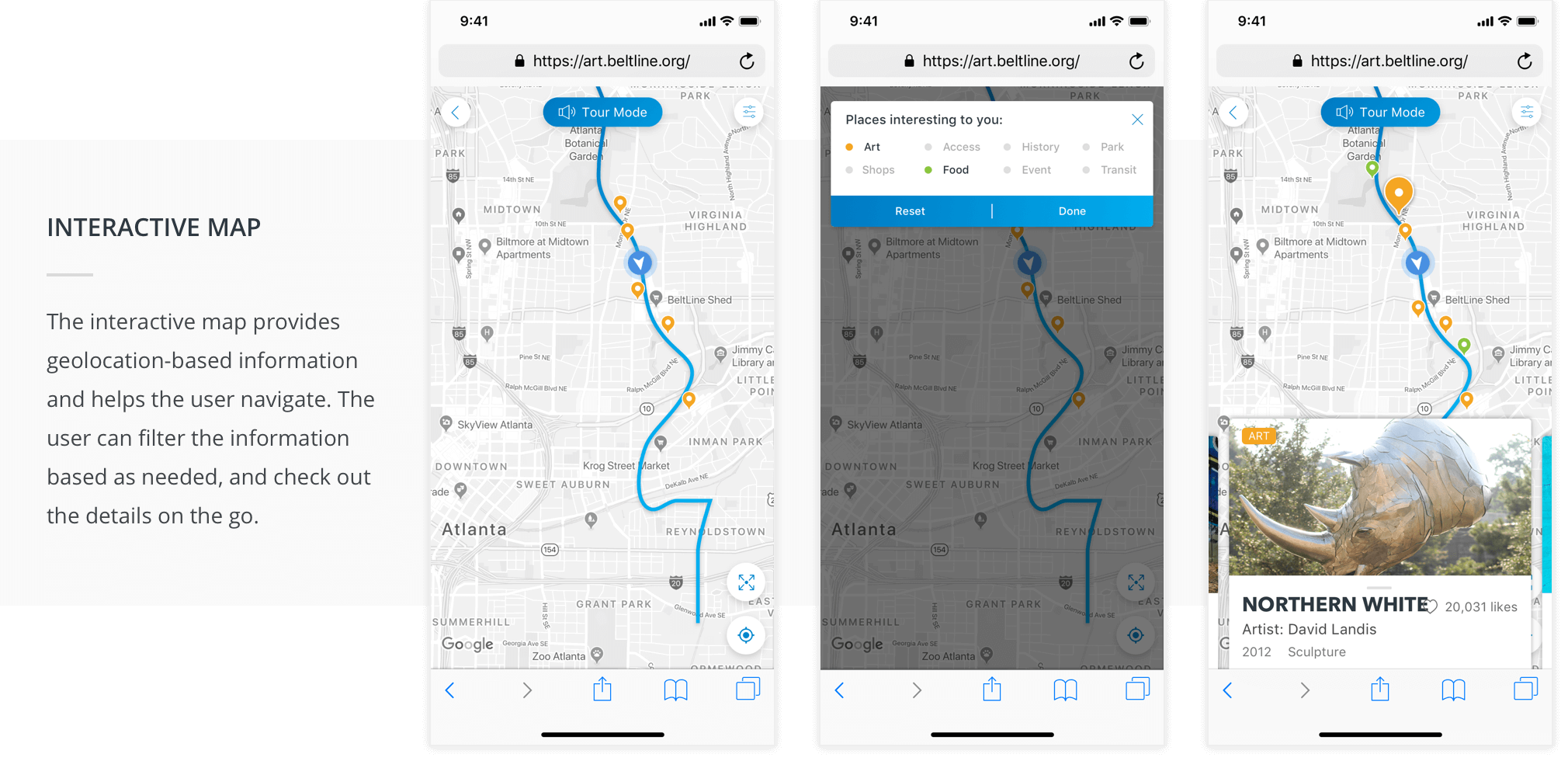
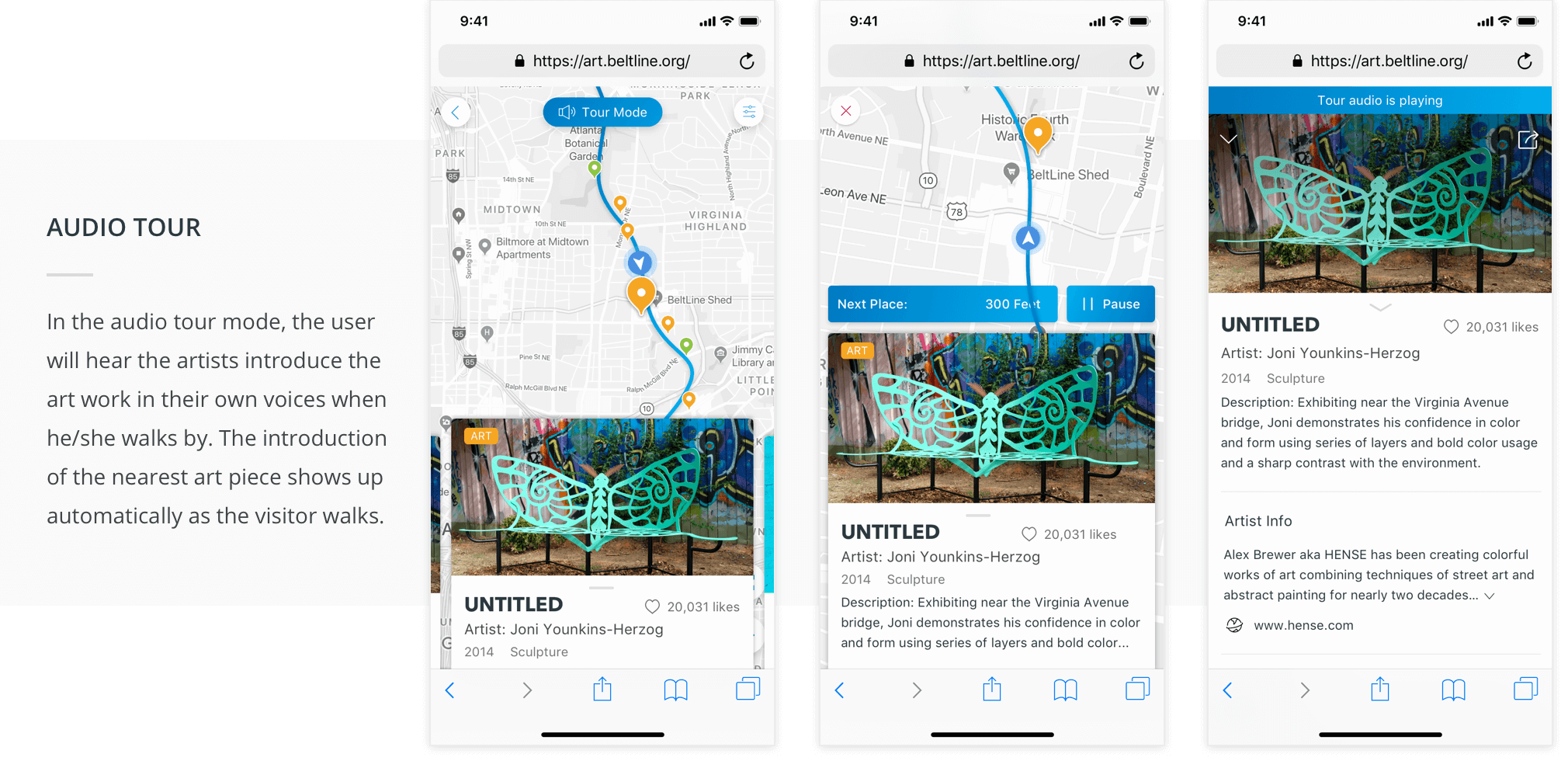
Backstage System
The backstage system empowers Atlanta Beltline staff and artists with efficient tools for content management, artwork documentation, and visitor engagement analytics.
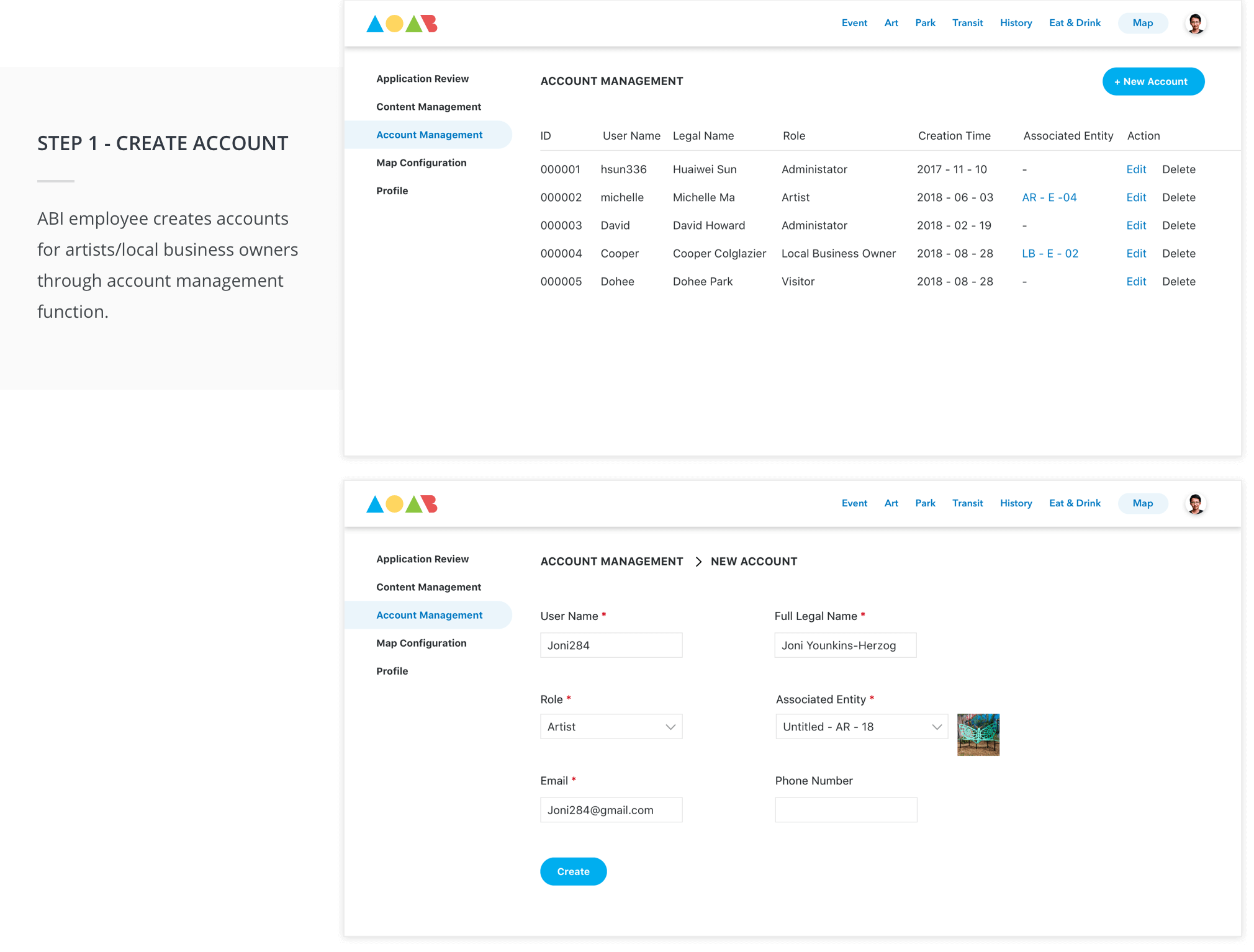
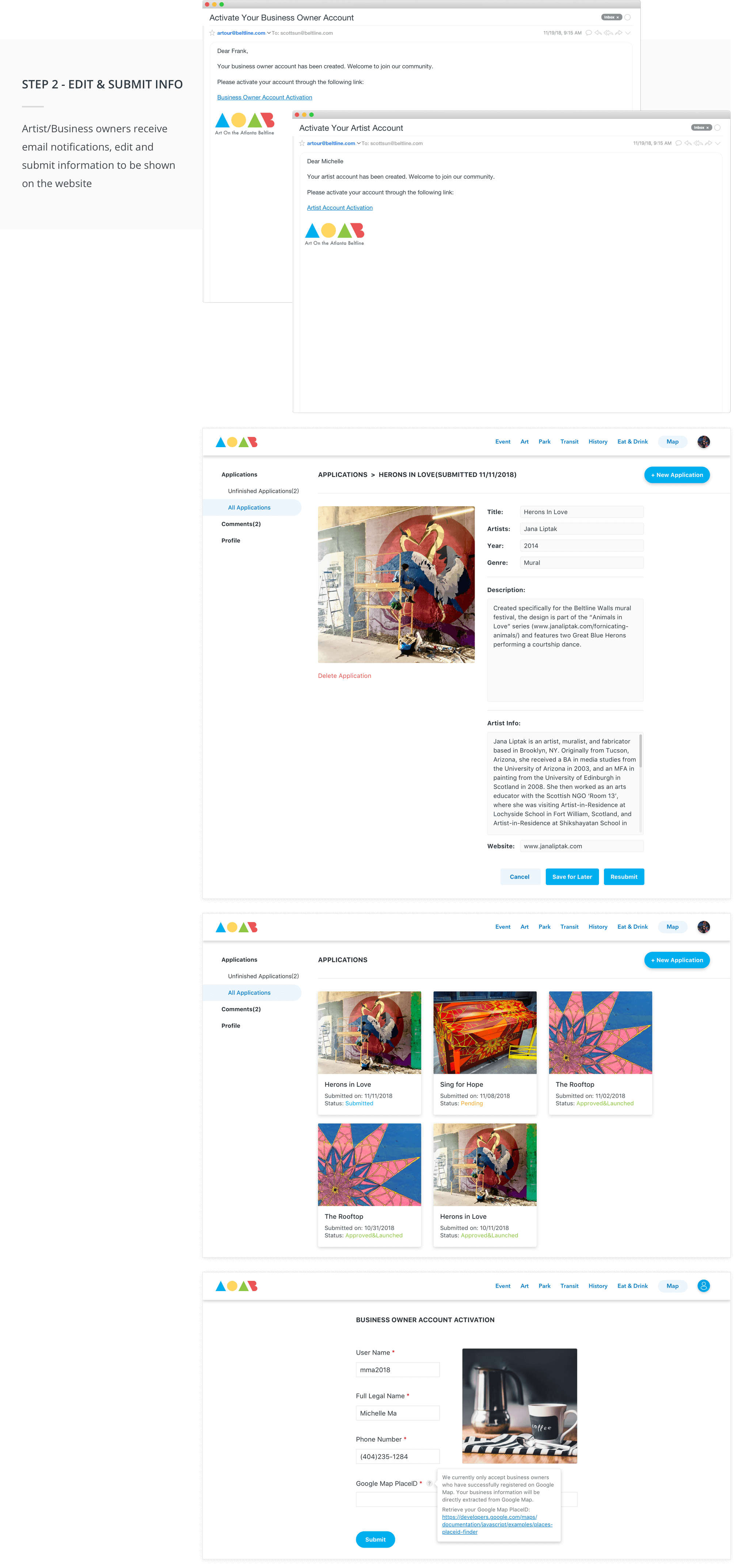
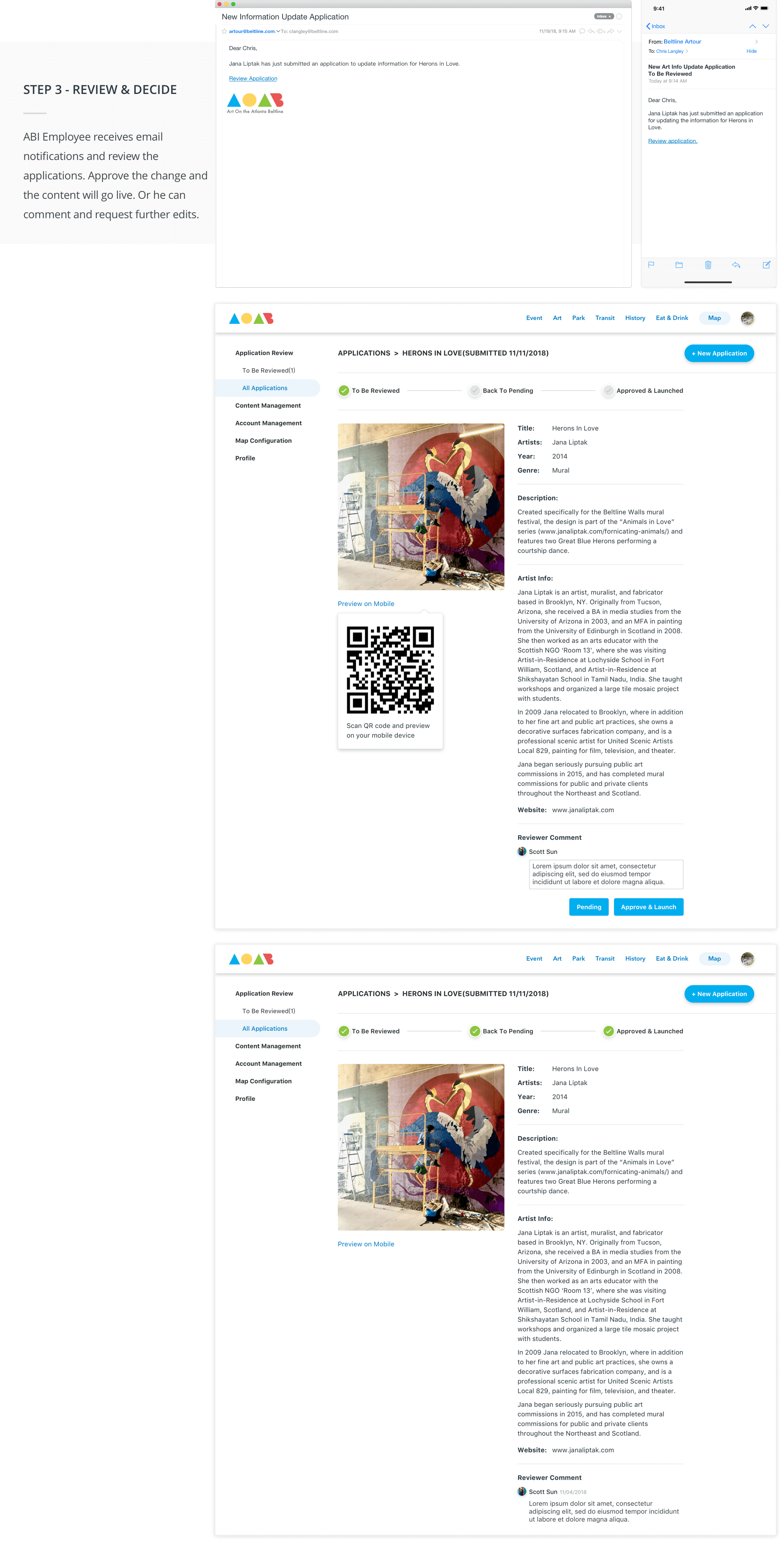
Brand System
We developed a cohesive brand system that maintains consistency across all touchpoints while respecting the existing Atlanta Beltline visual identity.
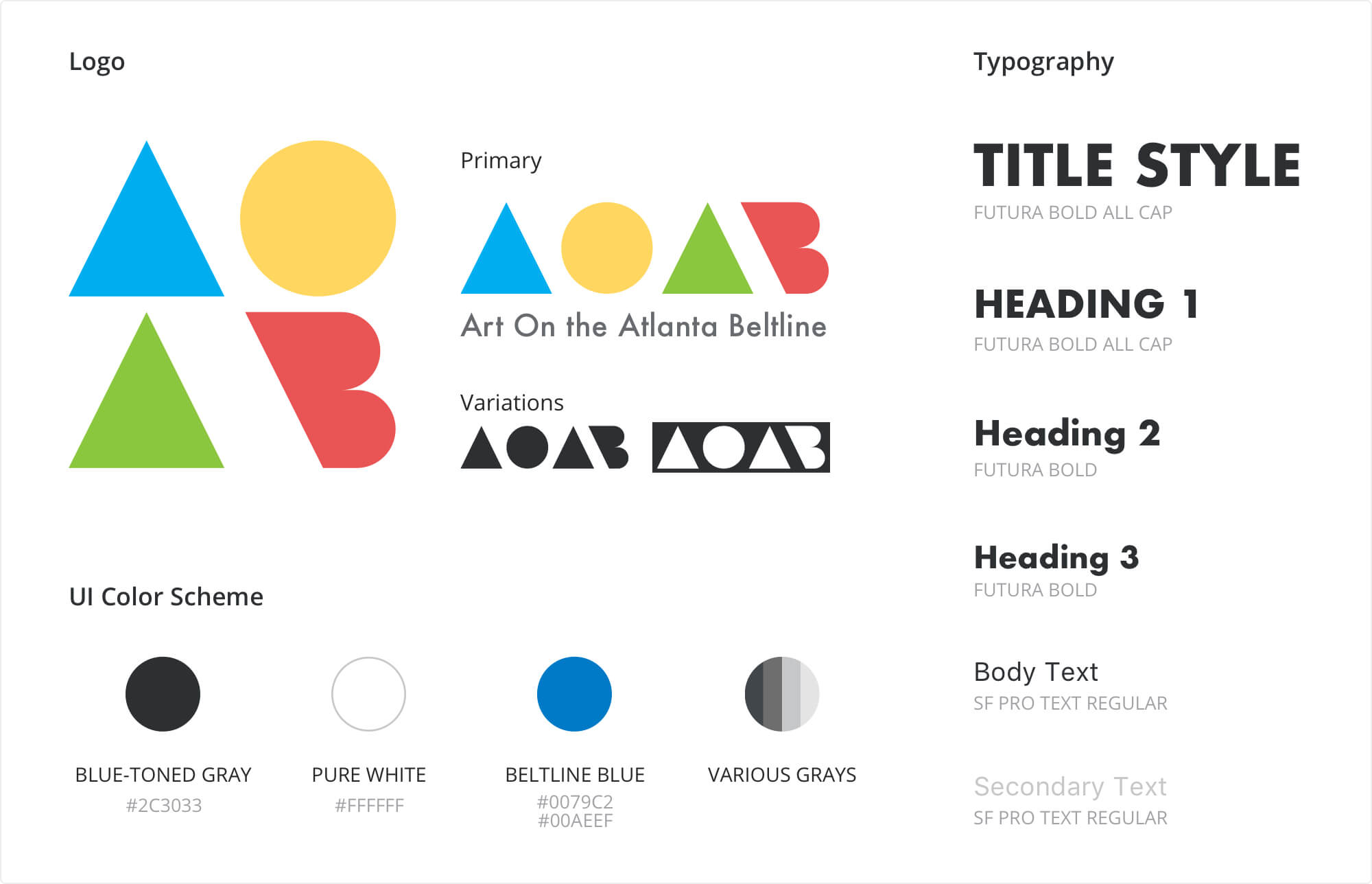
Physical Touchpoints
Physical touchpoints bridge the digital experience with the real-world art installations, providing contextual information and enhanced engagement opportunities.
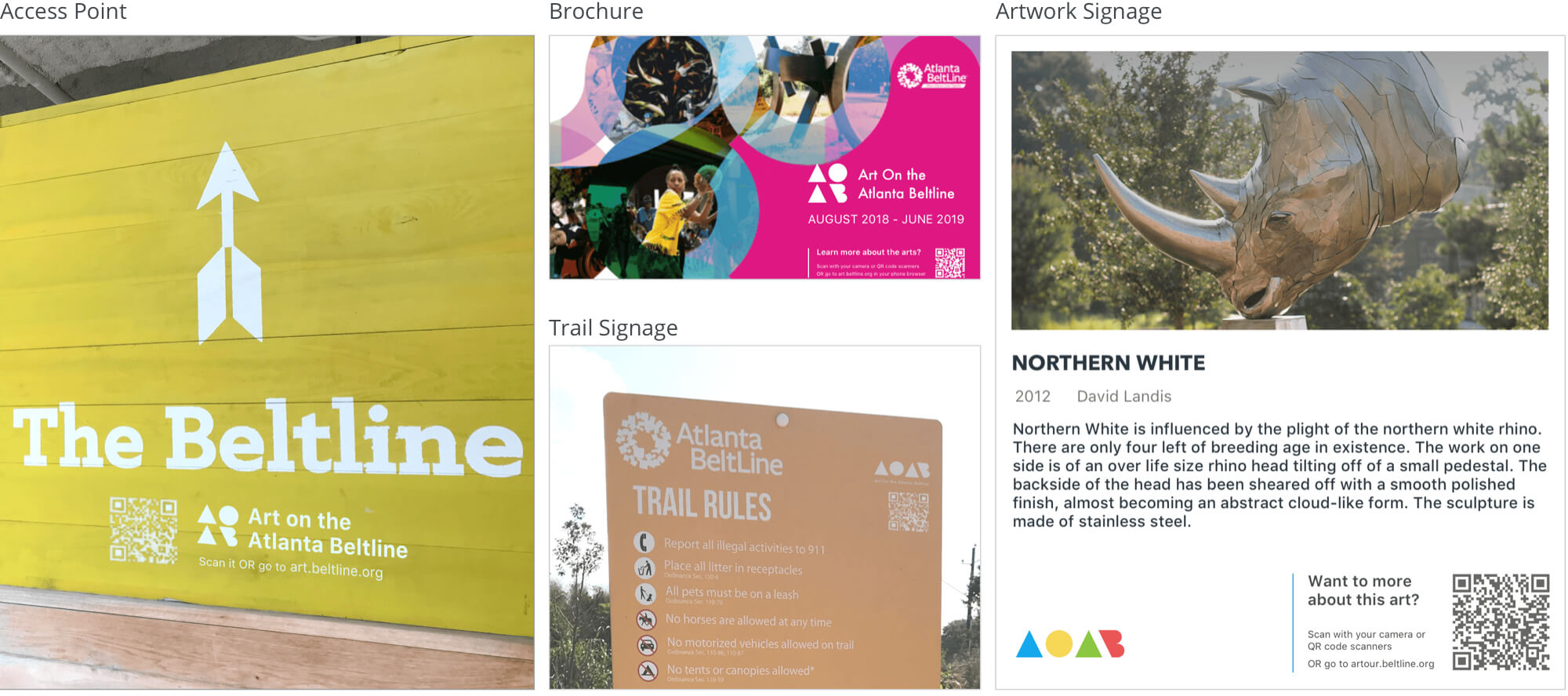
Digital Touchpoints
Digital touchpoints create a unified ecosystem that connects visitors, artists, and staff through web and mobile platforms optimized for art discovery and engagement.
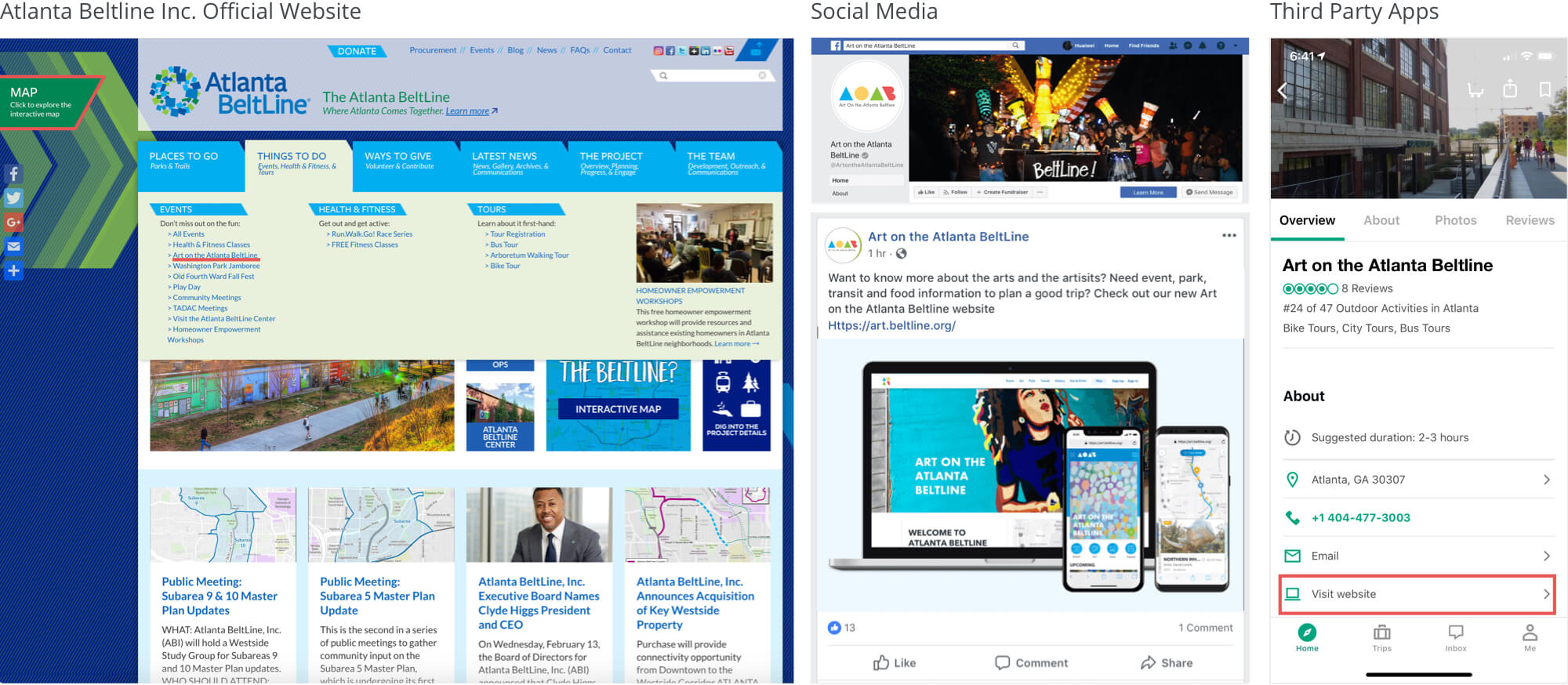
Validate & Iterate
Through concept testing and iterative design refinement, we validated our design approach and continuously improved the solution based on stakeholder feedback and usability insights.
Concept Testing
We conducted concept testing with key stakeholders to validate our design approach and gather feedback on the proposed solutions before moving into detailed design development.

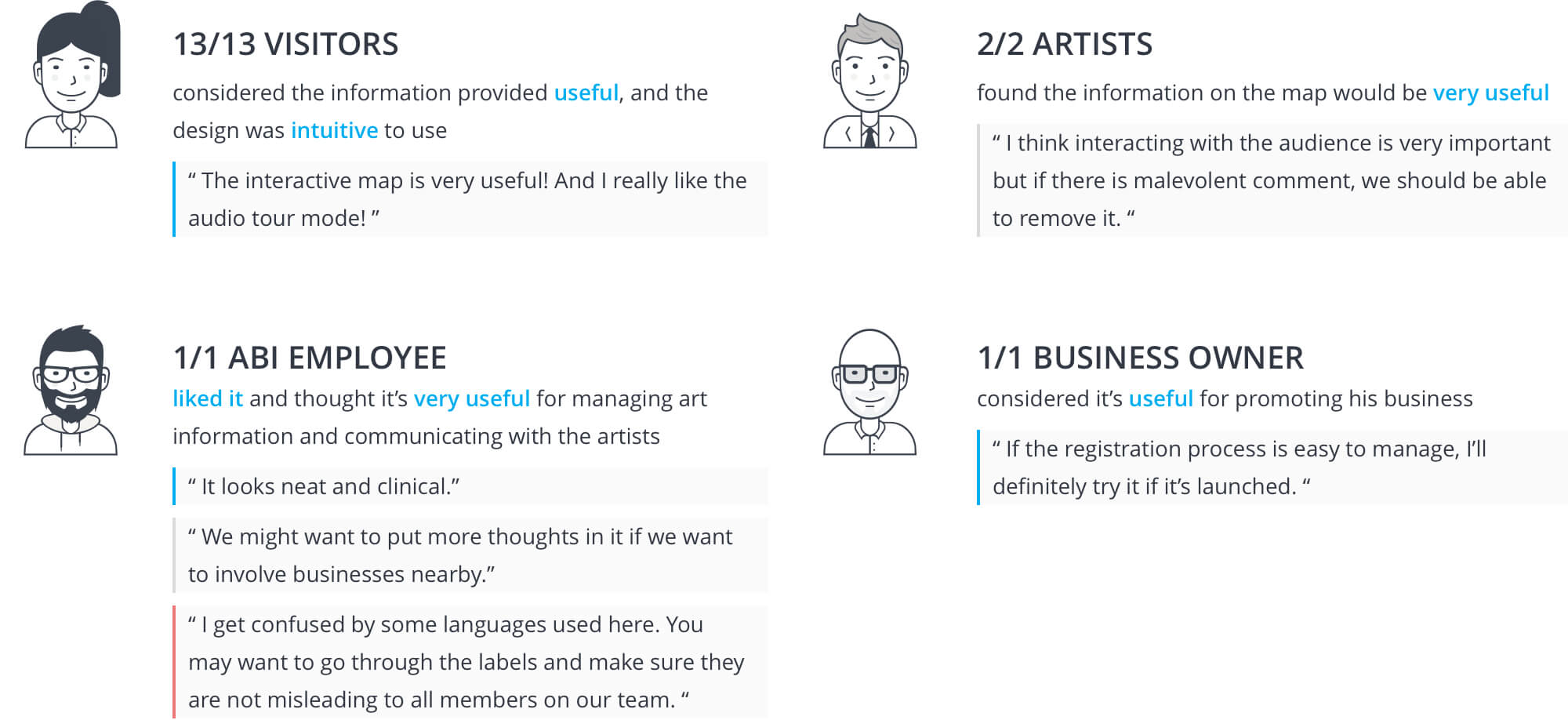
Iterations
Based on testing feedback and stakeholder input, we iteratively refined our design solutions, addressing usability concerns and enhancing the overall user experience.
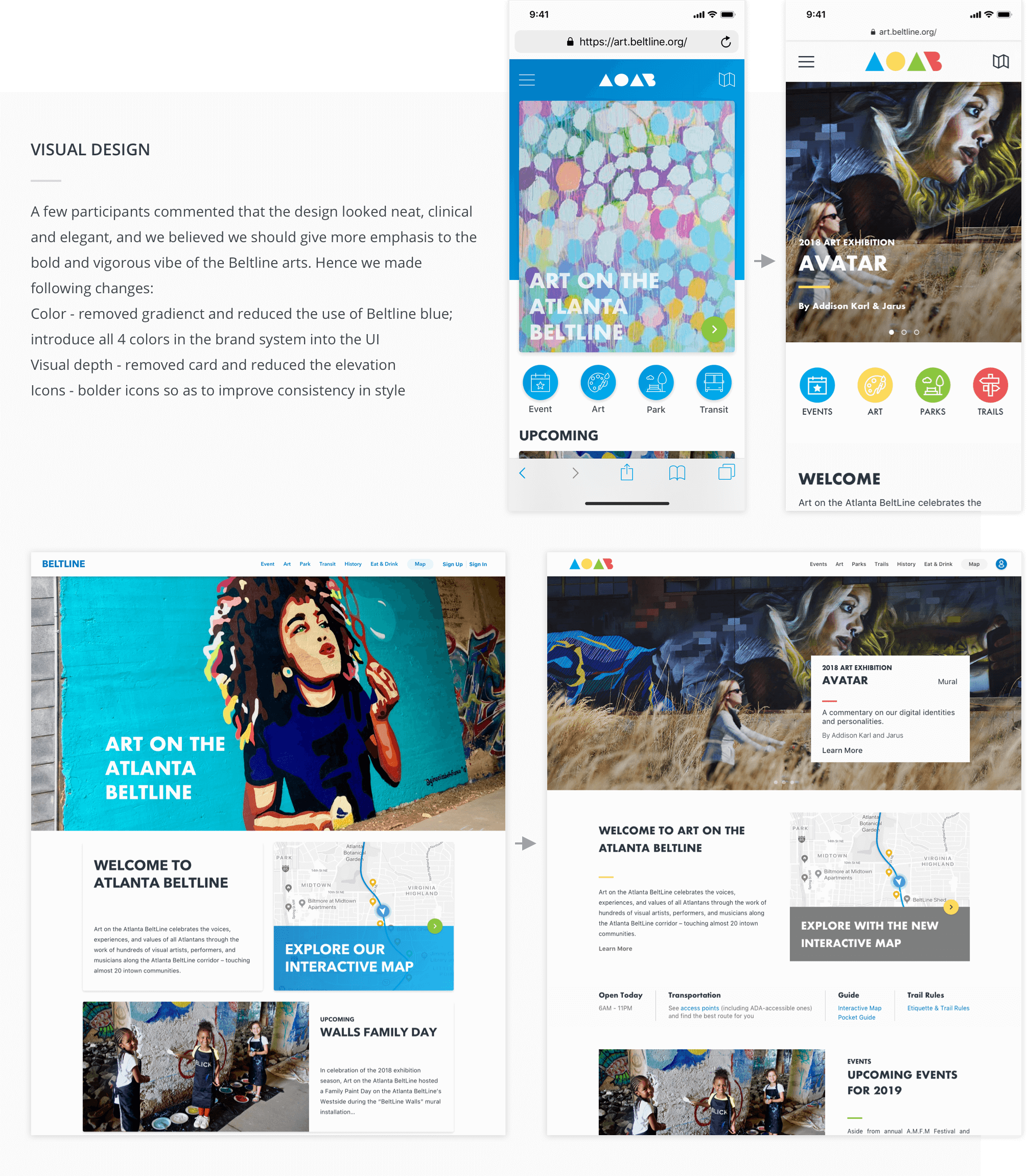
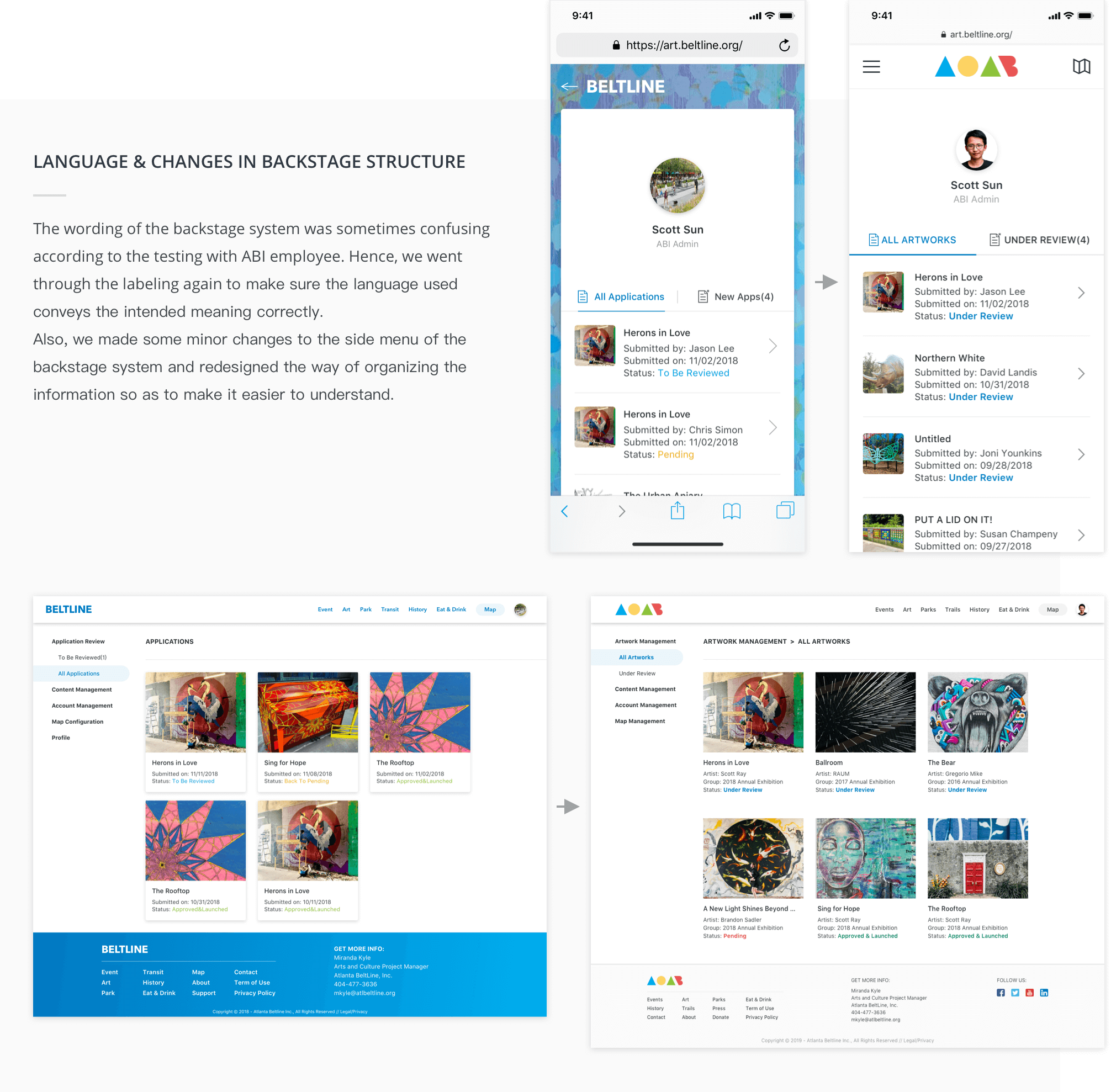
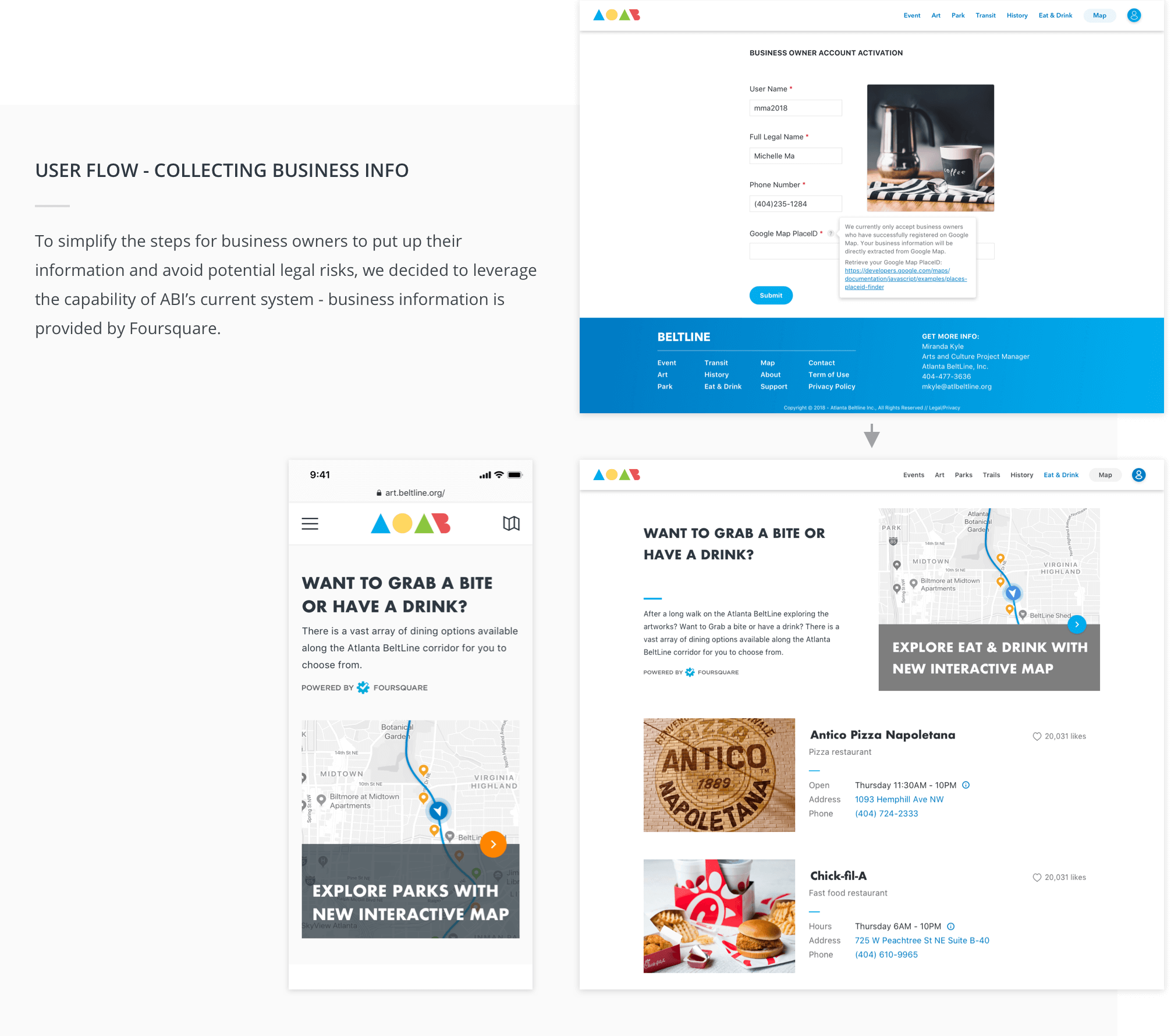
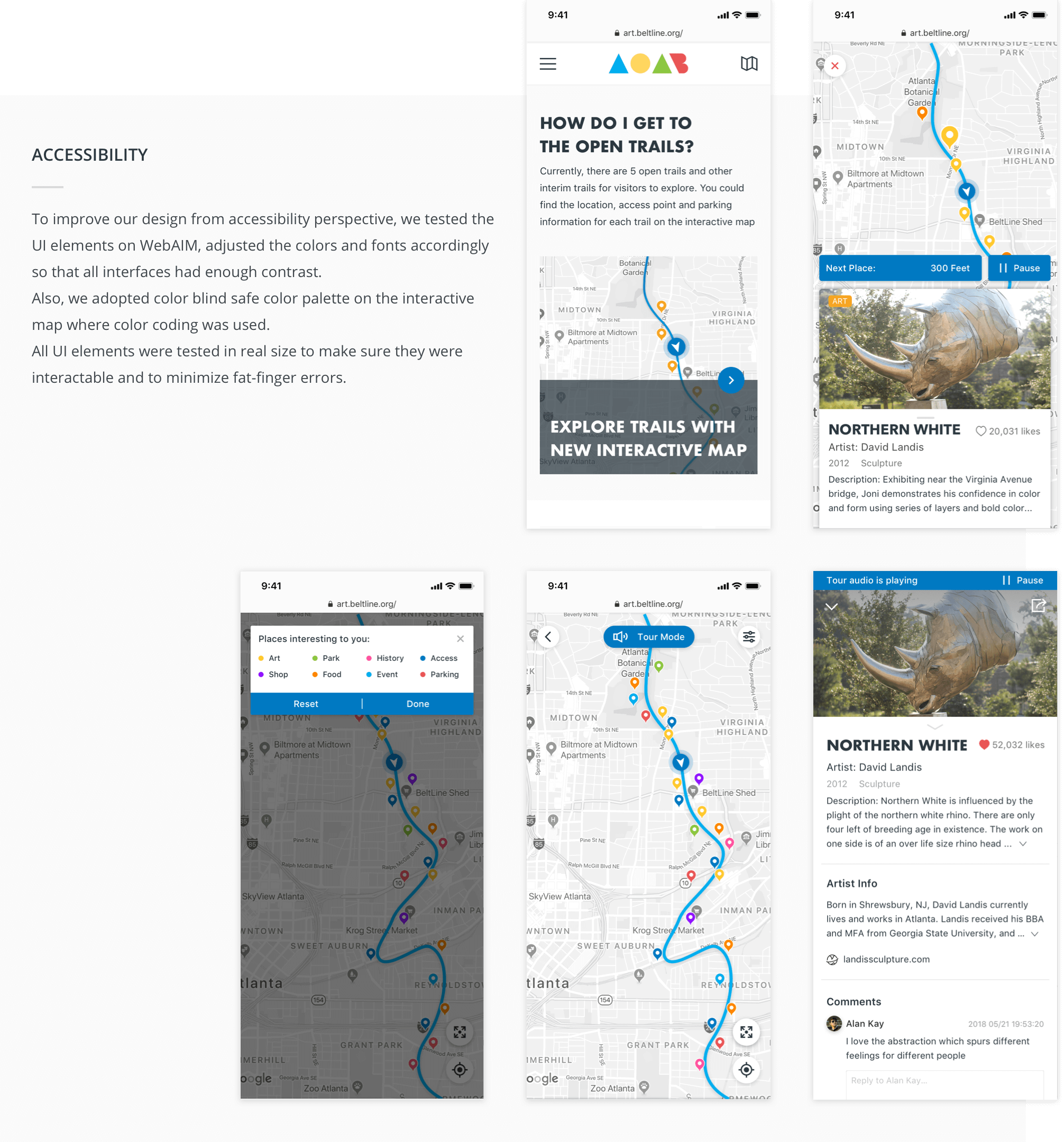
Final Design
The final design represents the culmination of our research, ideation, and iterative refinement process, delivering a comprehensive solution for both mobile and web platforms.
Mobile
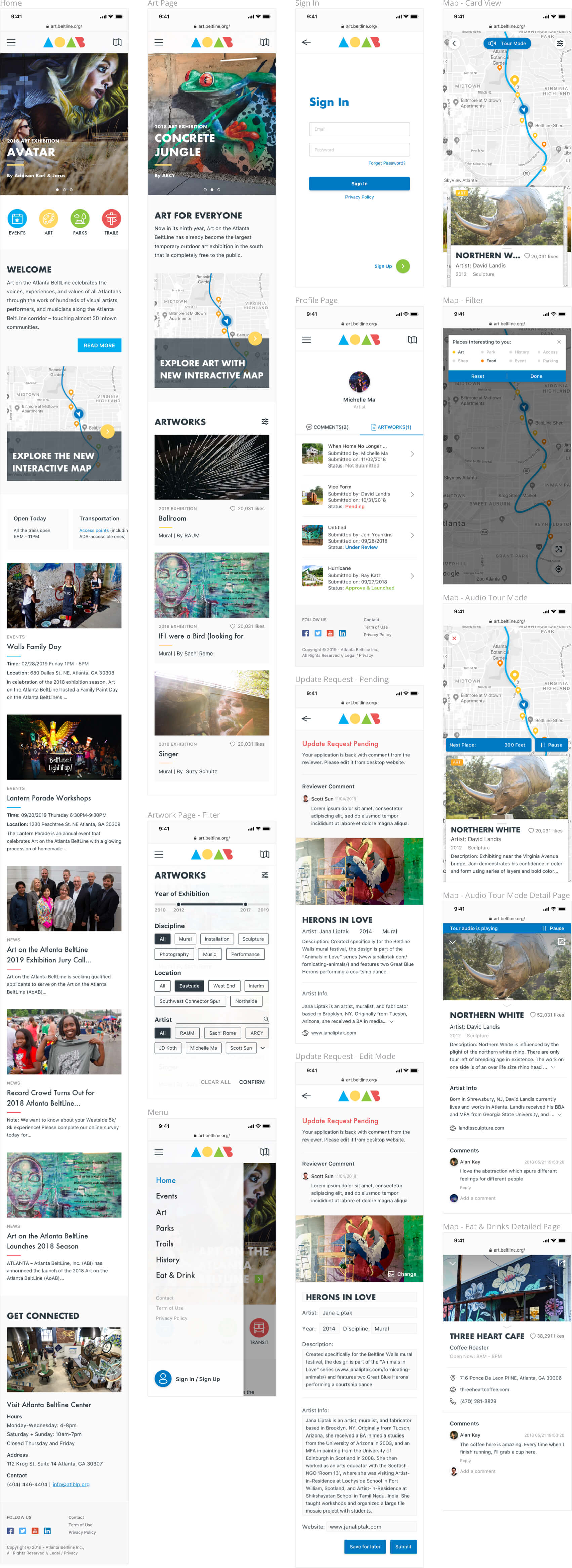
Web

Future Work
While our current design addresses the core challenges identified through research, there are several areas for future development and refinement.
Usability Test
Our user testing mainly focused on validating user values with the key stakeholders. We plan to test more detailed interactions once we finished with prototype with higher fidelity.
Other Modules in the System
Because of the scope and time limitation of this project, we only completed the design of the critical features and flows. There are other parts of the system, e.g. content editing and management in the backstage, needed to be designed and tested.
Physical Touch Points
Accessing the website through scanning QR code on our physical touch points caused some confusion. Designing instruction or tutorial to help people learn how to scan the QR code is needed.
Integration
Currently, Atlanta Beltline has multiple websites and mobile apps developed for different purposes. There are overlaps between each other. And we need to discuss the positioning of each platform and how to integrate them to best serve the audience.
